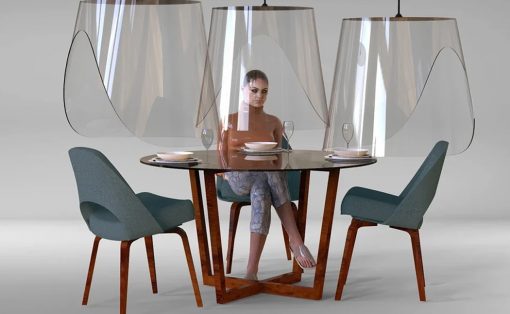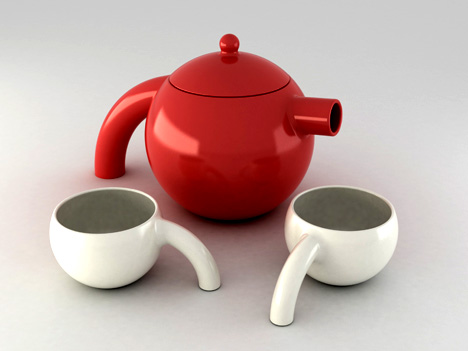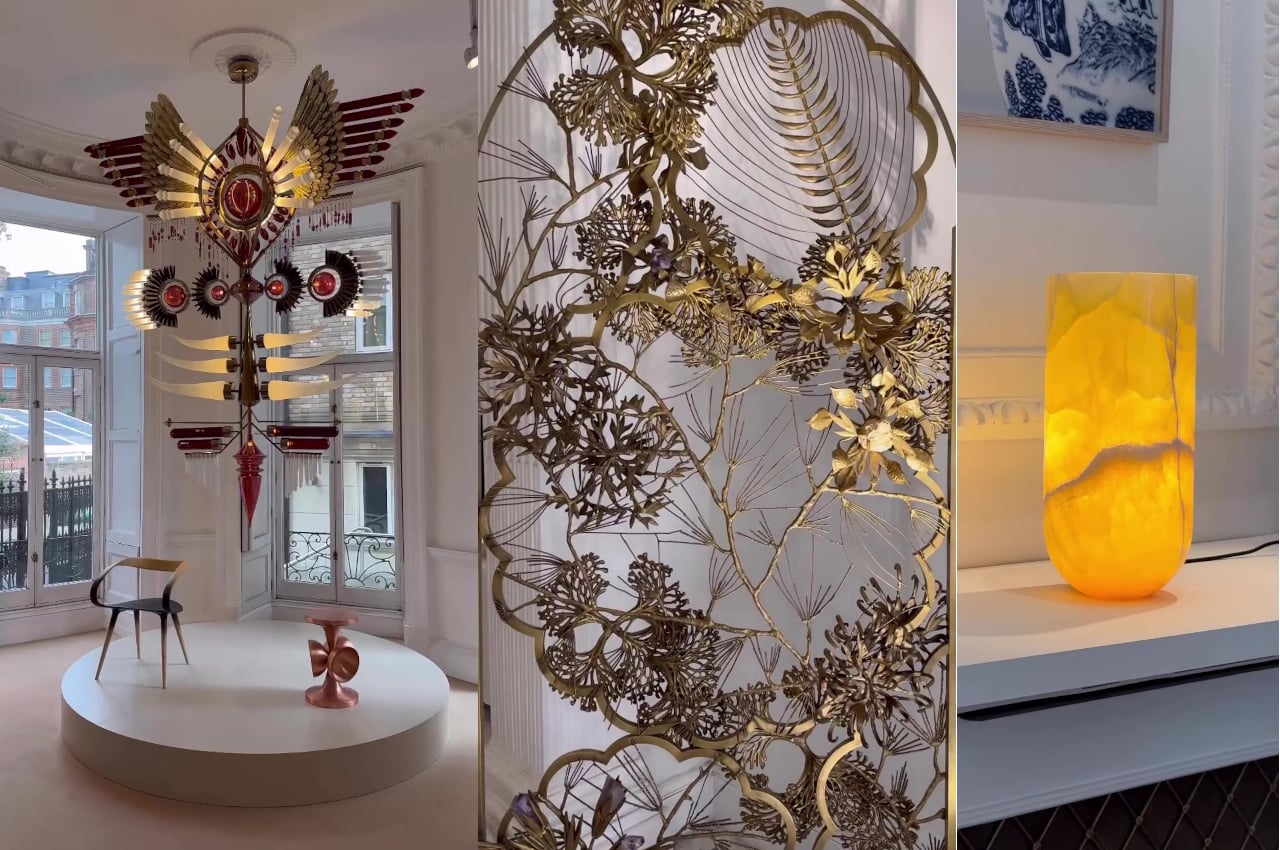
Amidst the swift rise in large-scale manufacturing, the safeguarding of traditional global arts and crafts is at a critical juncture. In such a scenario, one notable global e-commerce platform committed to restoring this balance is Curio. Founded in 2022 by London-based architect Shalini Misra, Curio centers around the revitalization of indigenous crafts. Shalini states, ‘Our mission is to unite fresh communities of creators, makers, appreciators, and patrons in honoring human creativity and craftsmanship, with a vision to protect and uphold these invaluable skills for generations to come.’ Explore Curio’s thoughtfully curated assortment of products reinvigorating indigenous handicrafts and nurturing innovation amidst the modern landscape.
Designer: Curio
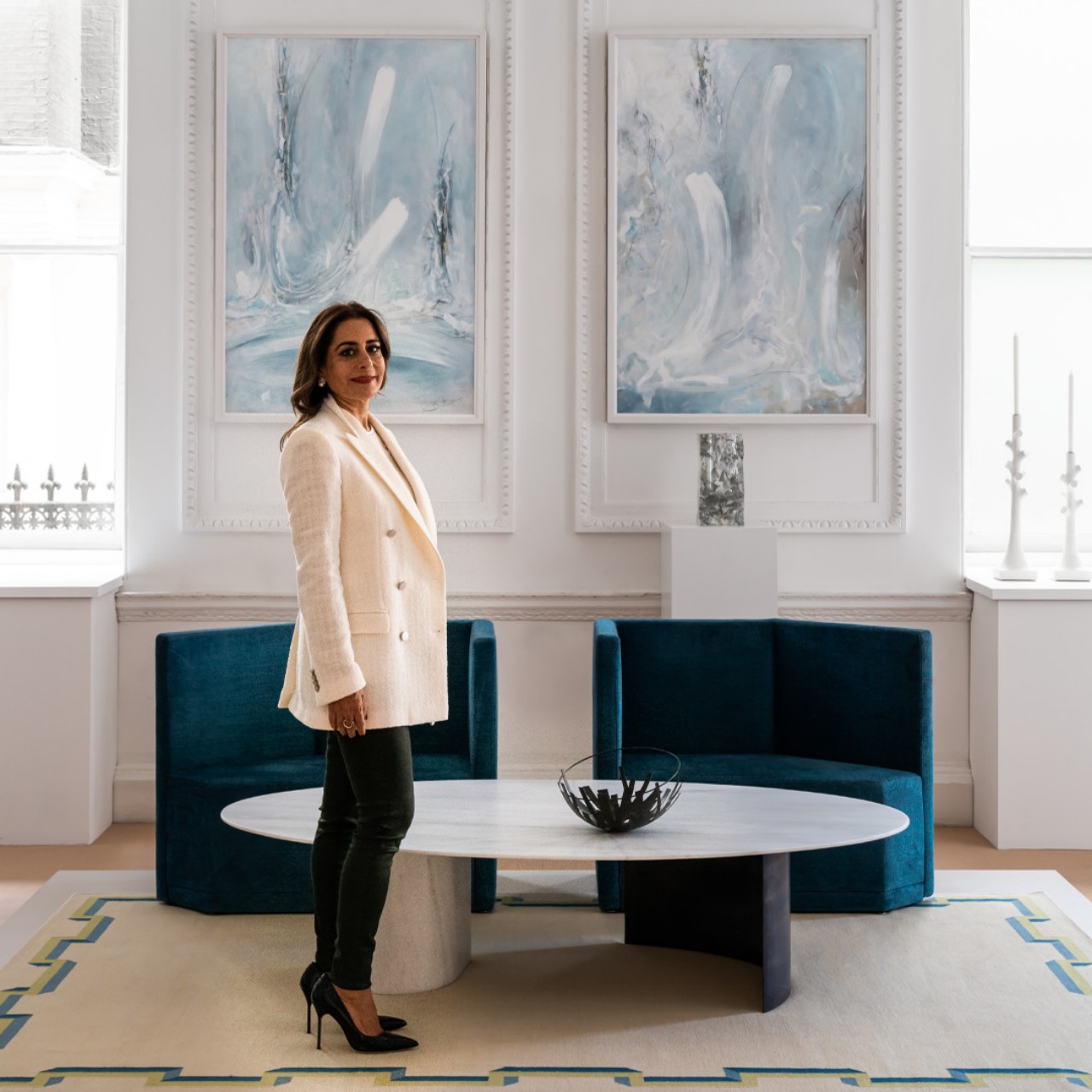
1. Glass Blowing
Glass-blowing originated in the 1st century BC and was invented by Syrian artisans. It coincided with the establishment of the Roman Empire, which was instrumental in the growth and expansion of this craft. The glass-forming technique involves shaping molten glass by inflating it into a bubble through a blowpipe.
Fazzoletto Aqua Vase by Venini, Italy
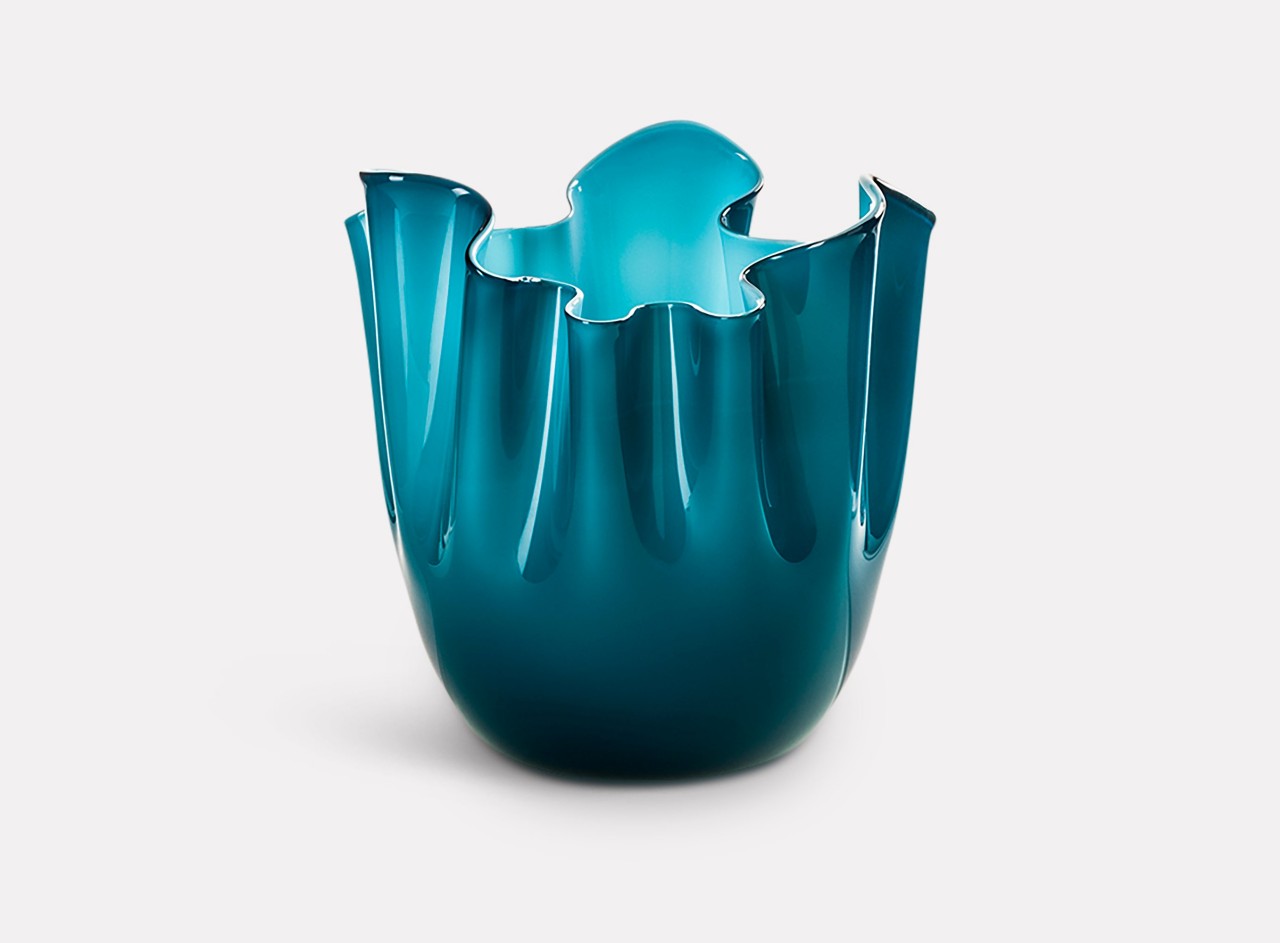
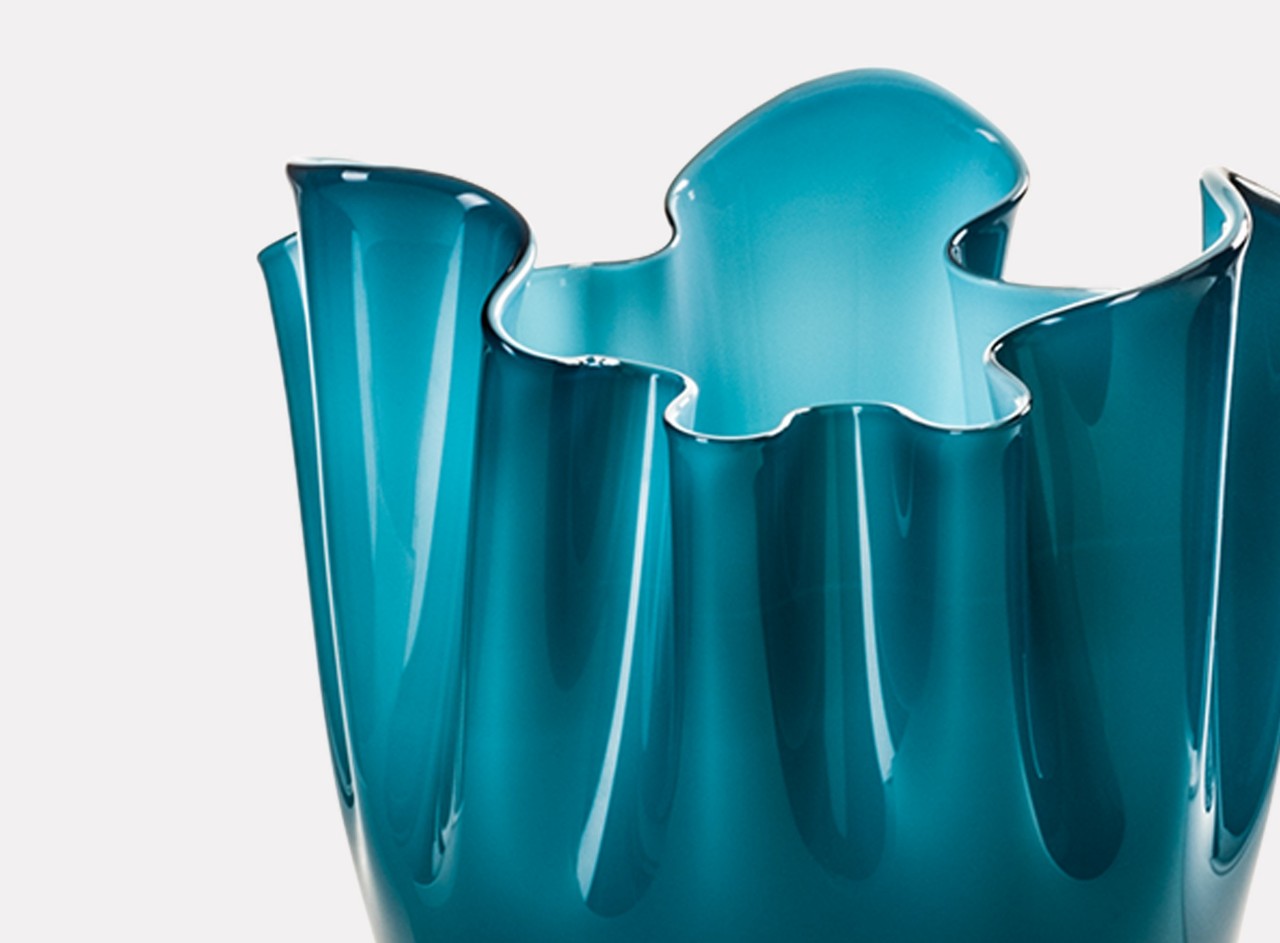
Designer: Venini
Crafted using the Opalini technique, which involves creating opalescent glass with vibrant colors and translucent quality, this aqua Fazzoletto vase is meticulously shaped to resemble a loose handkerchief. Made by Venini’s skilled glassmakers in Murano, its two-tone interior and exterior create a subtle distinction in hues.
Peacock Floor Lamp by Klove Studio, India
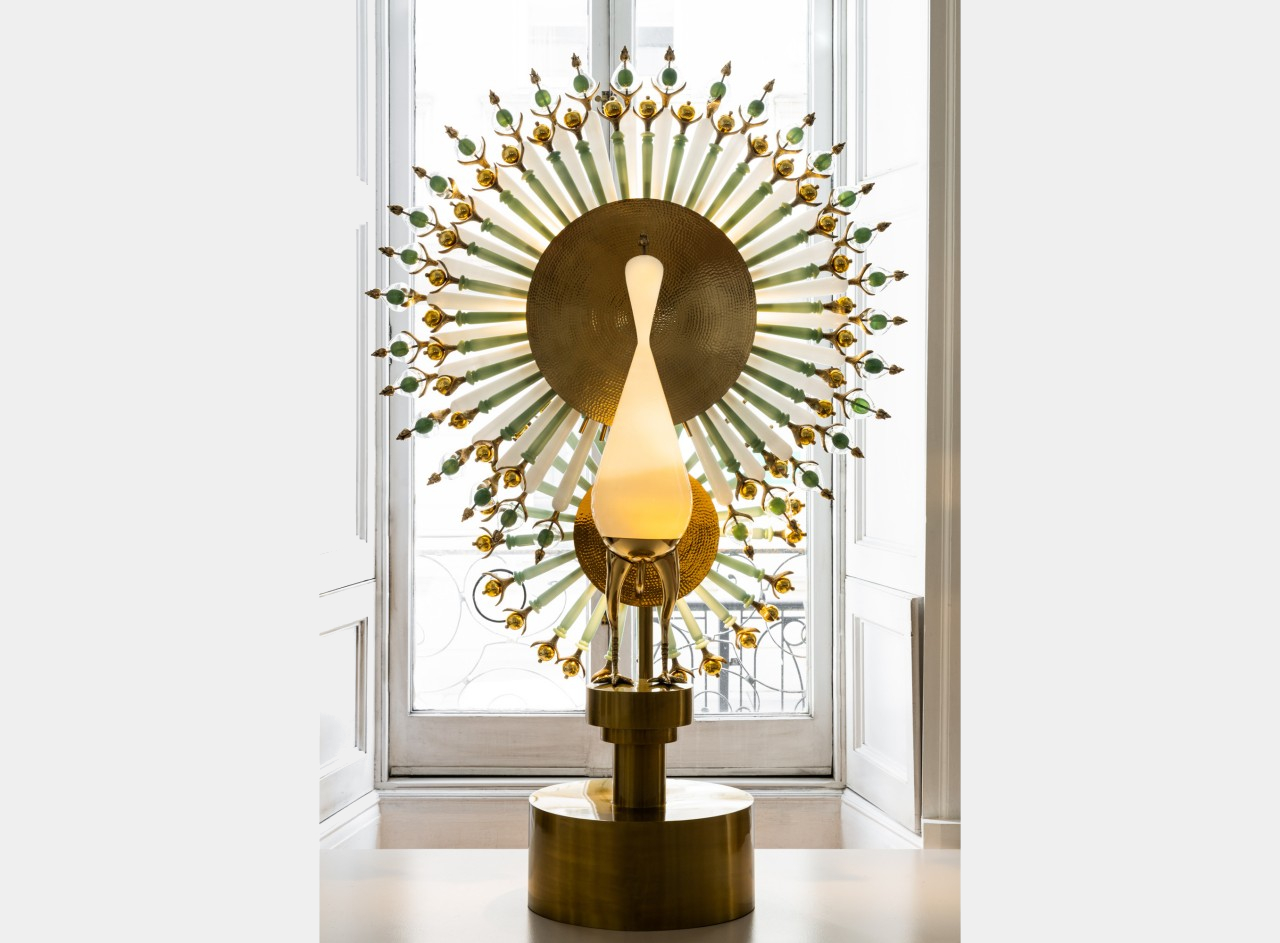
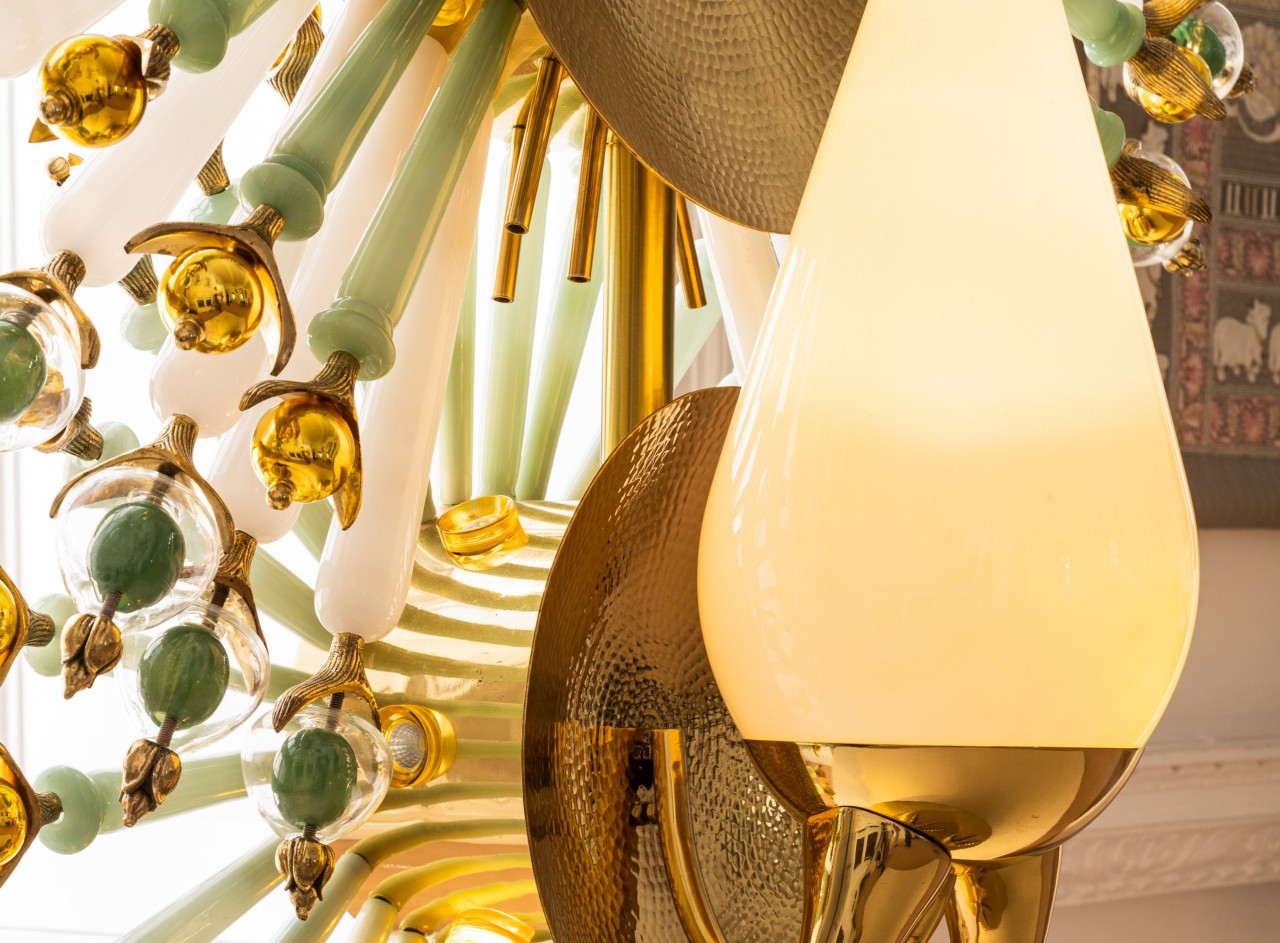
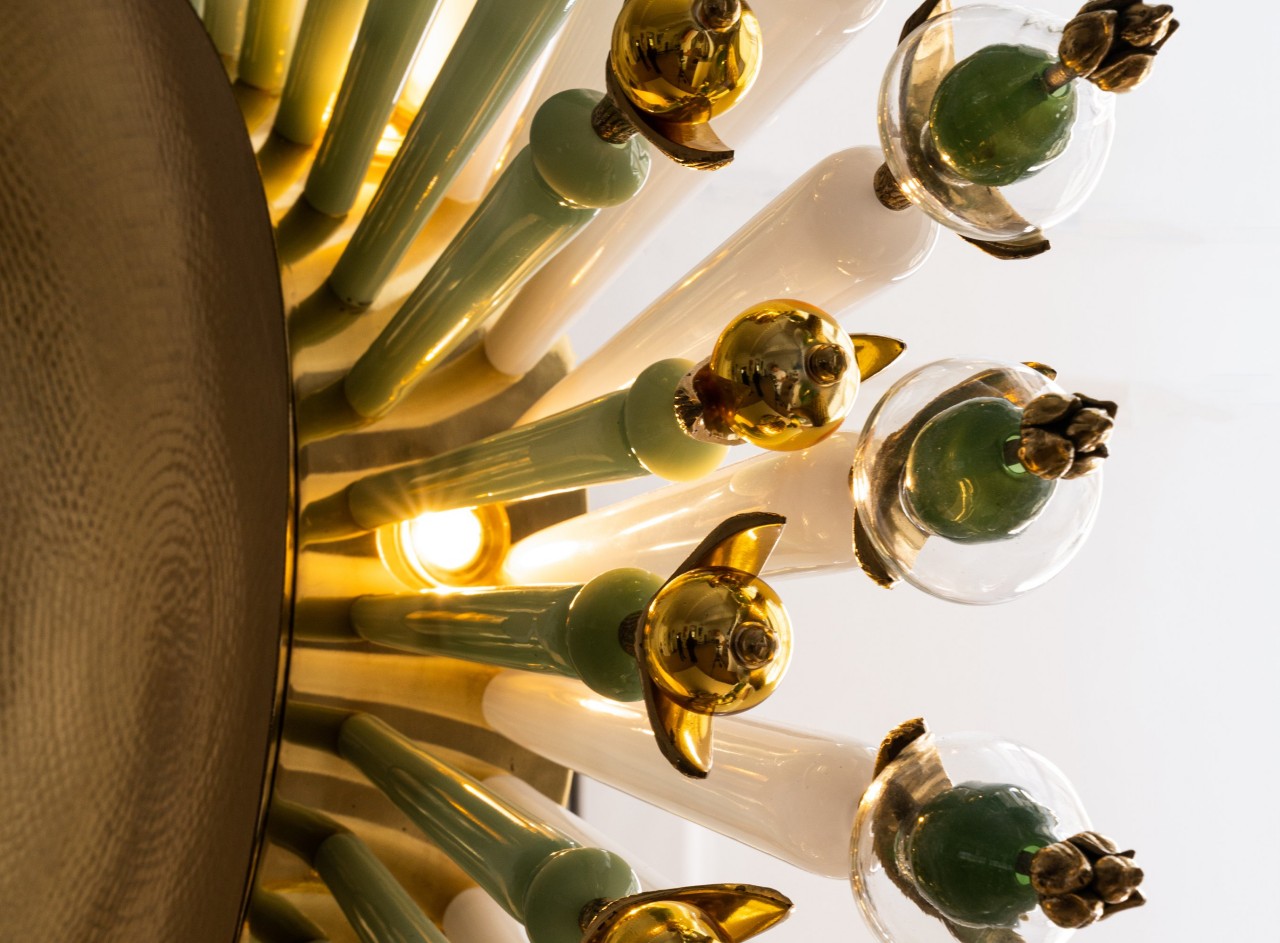

Designer: Klove Studio
The Peacock floor lamp, crafted from handblown glass and polished brass, celebrates ancient rituals as it pays tribute to the protective and healing powers attributed to peacock feathers. Its central white blown glass body is encircled by a hammered brass halo that reflects light, and its tail feathers fan out in an artful composition of blown glass and brass batons.
2. Pottery
Pottery, integral to diverse cultures for millennia, traces back to prehistoric times, with the potter’s wheel invented in Mesopotamia between 6,000 and 4,000 BC. The techniques of pinching, coiling, and wheel-throwing allowed potters to shape pieces, which were frequently left unglazed and fired over open flames.
Volcano Wide Vase by CEE Ceramics, UK
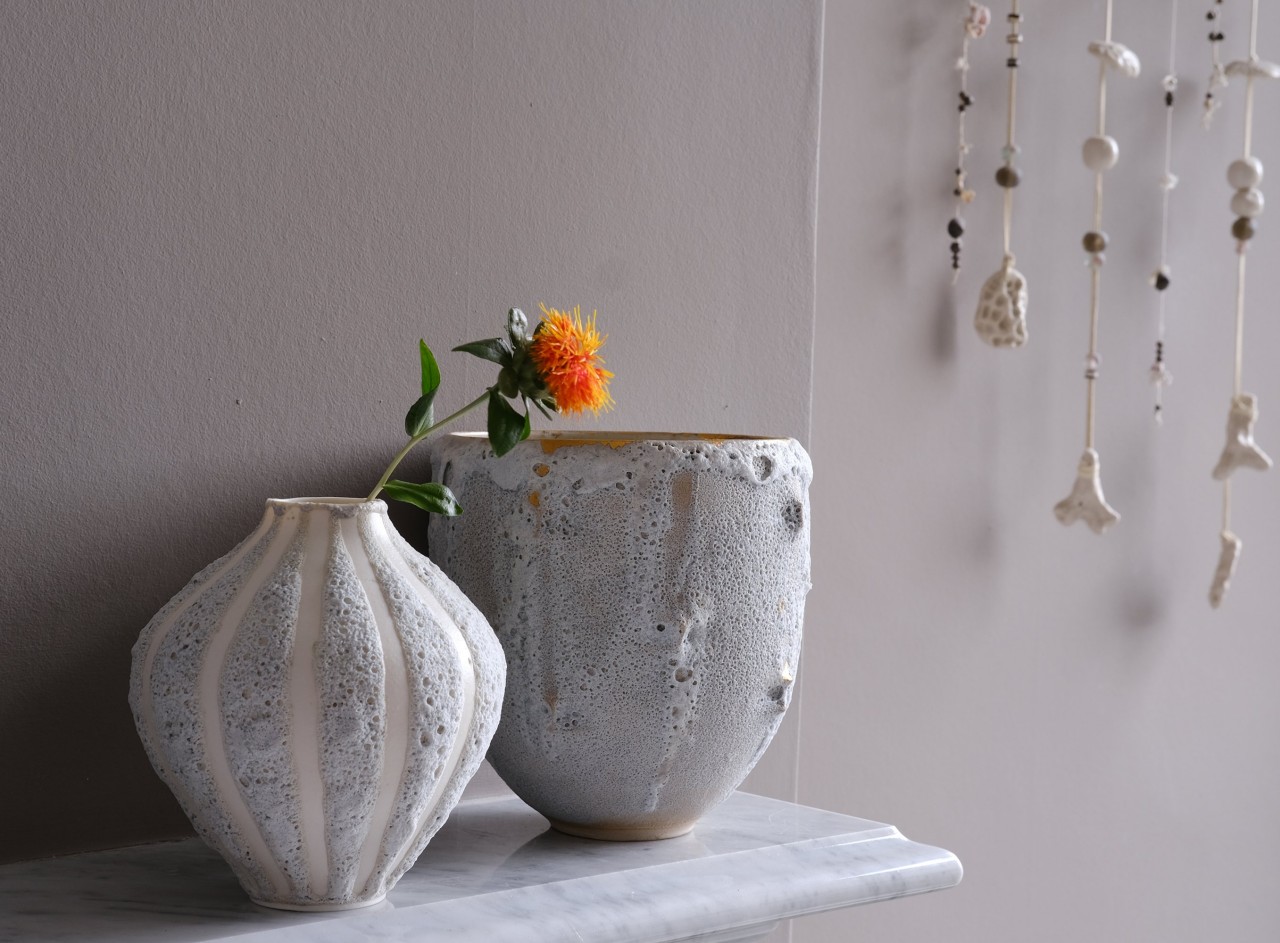
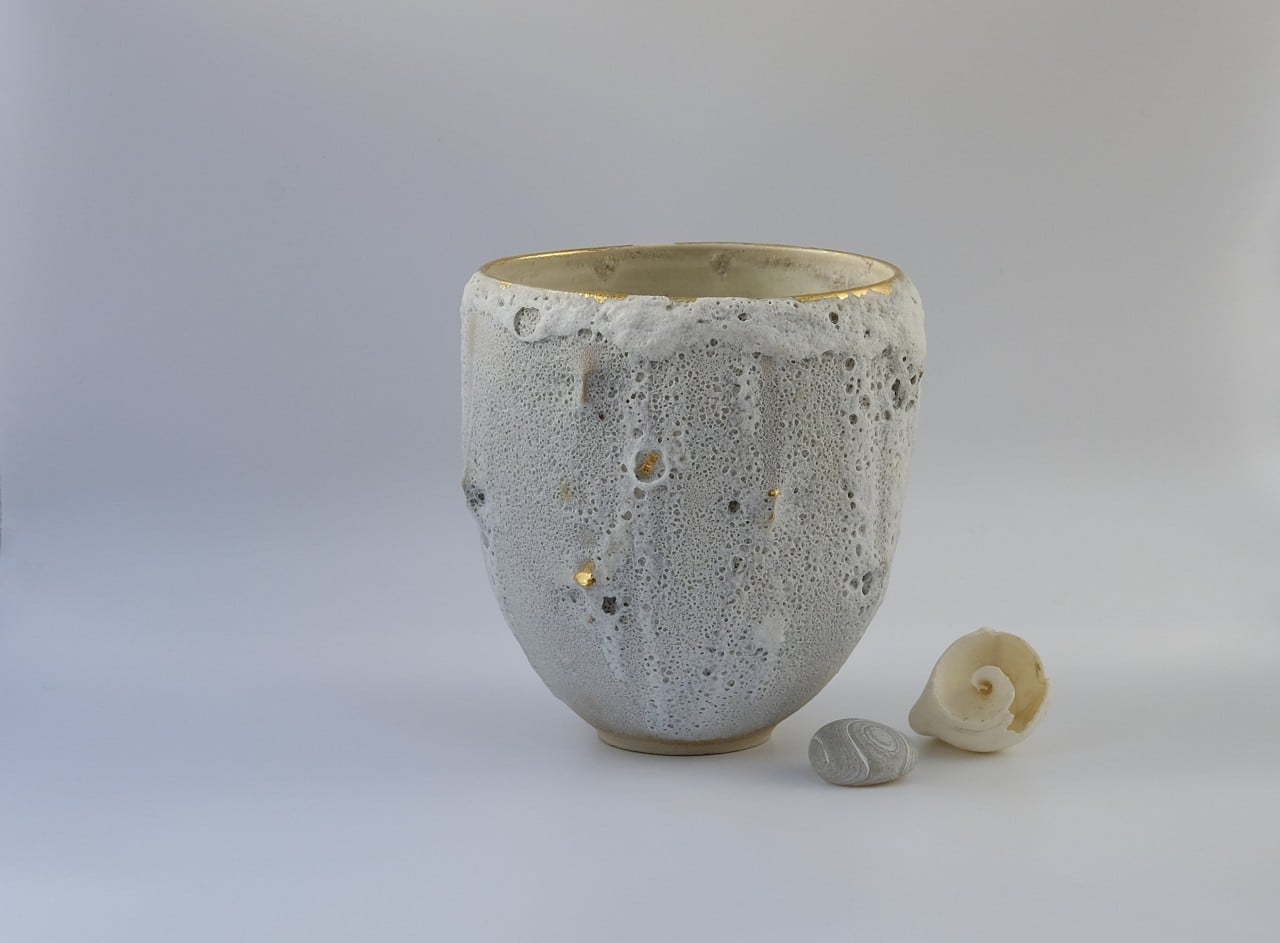
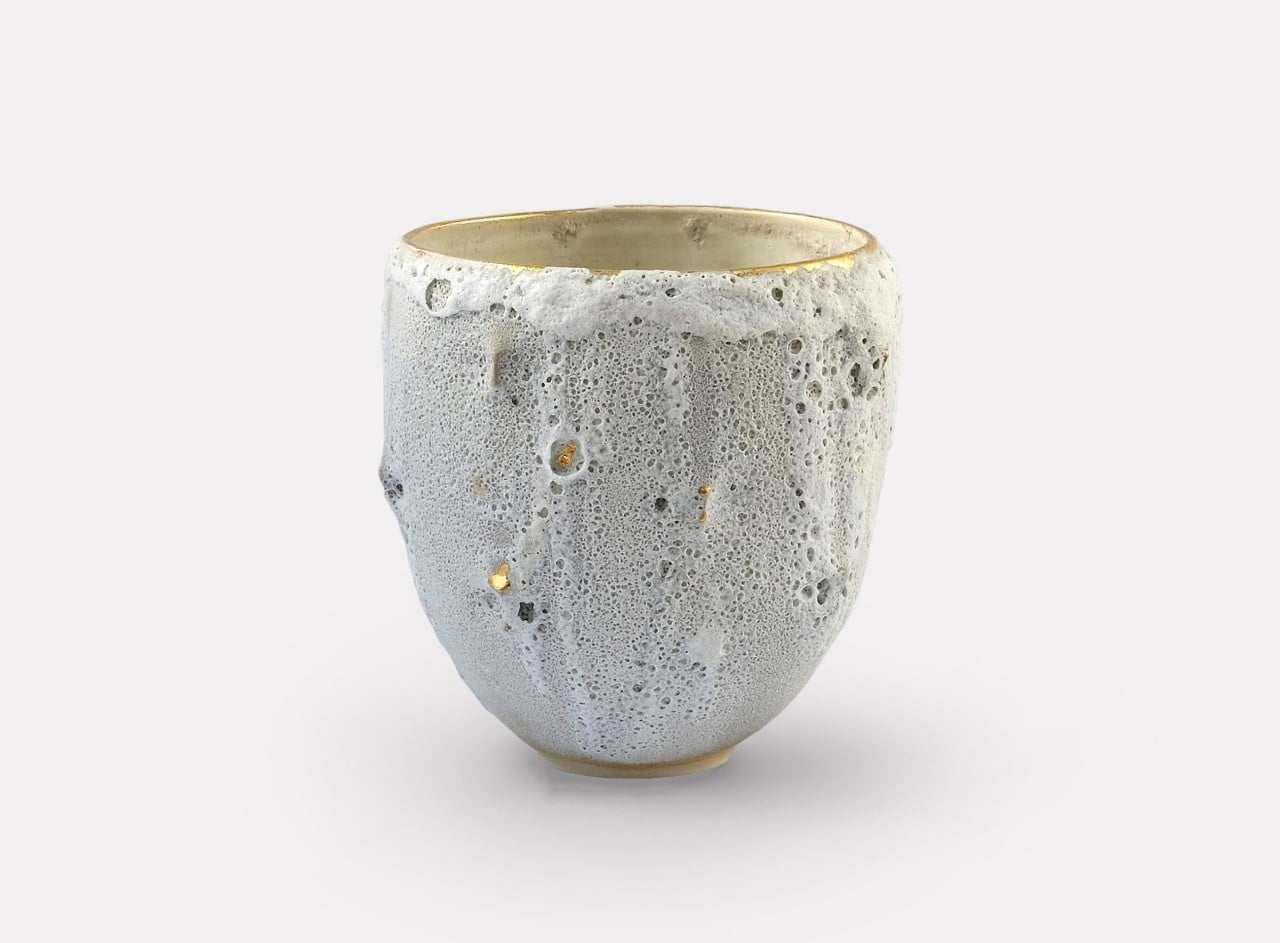
Designer: CEE Ceramics
Inspired by the sea and its creatures, the Volcano Wide vase is shaped from stoneware clay on a wheel, then modified through pinching, before being glazed with matte white, wax-resistant, and reactive volcanic glazes. This piece of art conveys texture, landscape, and tone through clay, embodying Scandinavian simplicity in exquisite ceramics.
Solar Plexus White Gold Sculpture by Matt Sherratt, UK
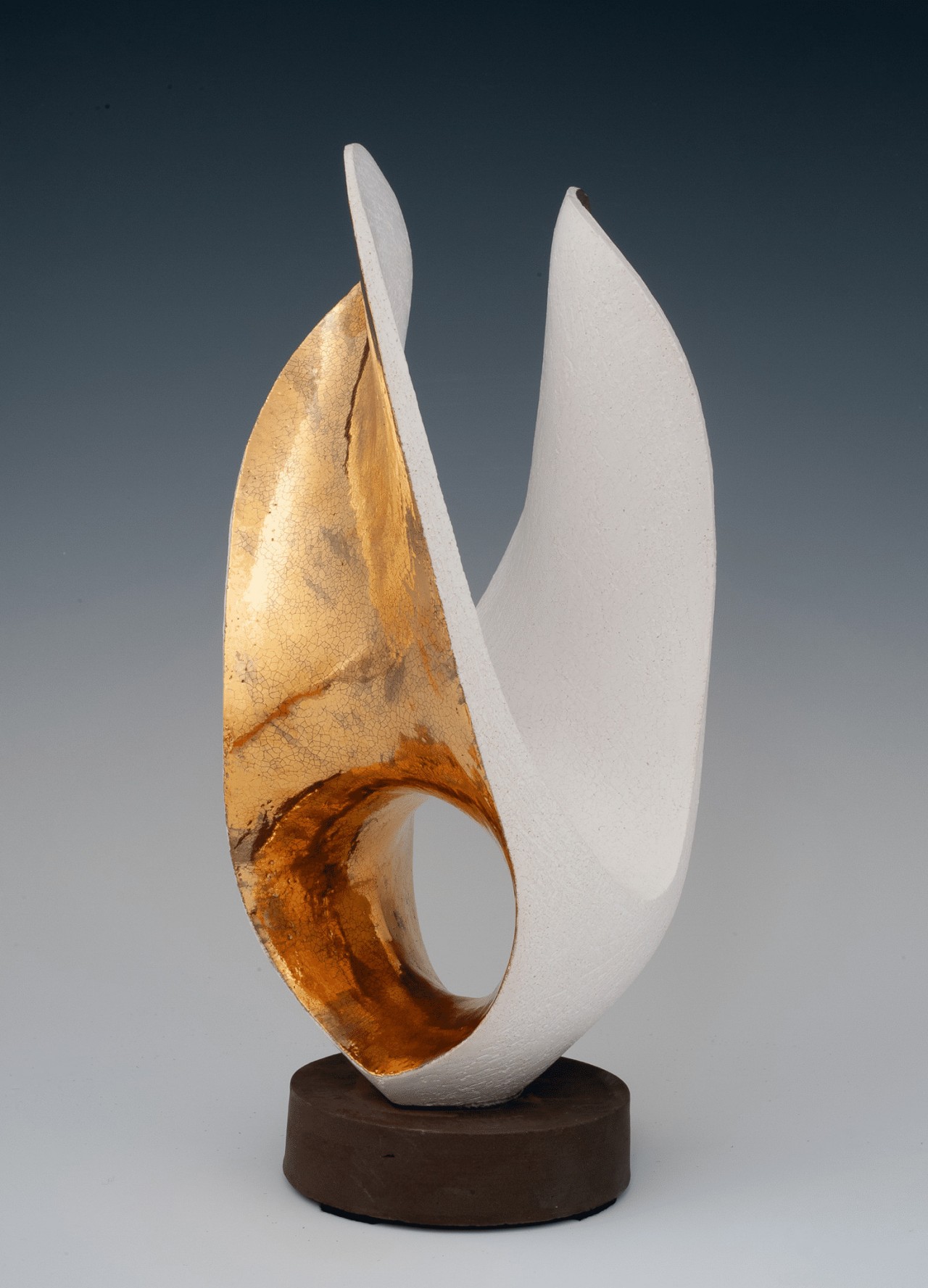
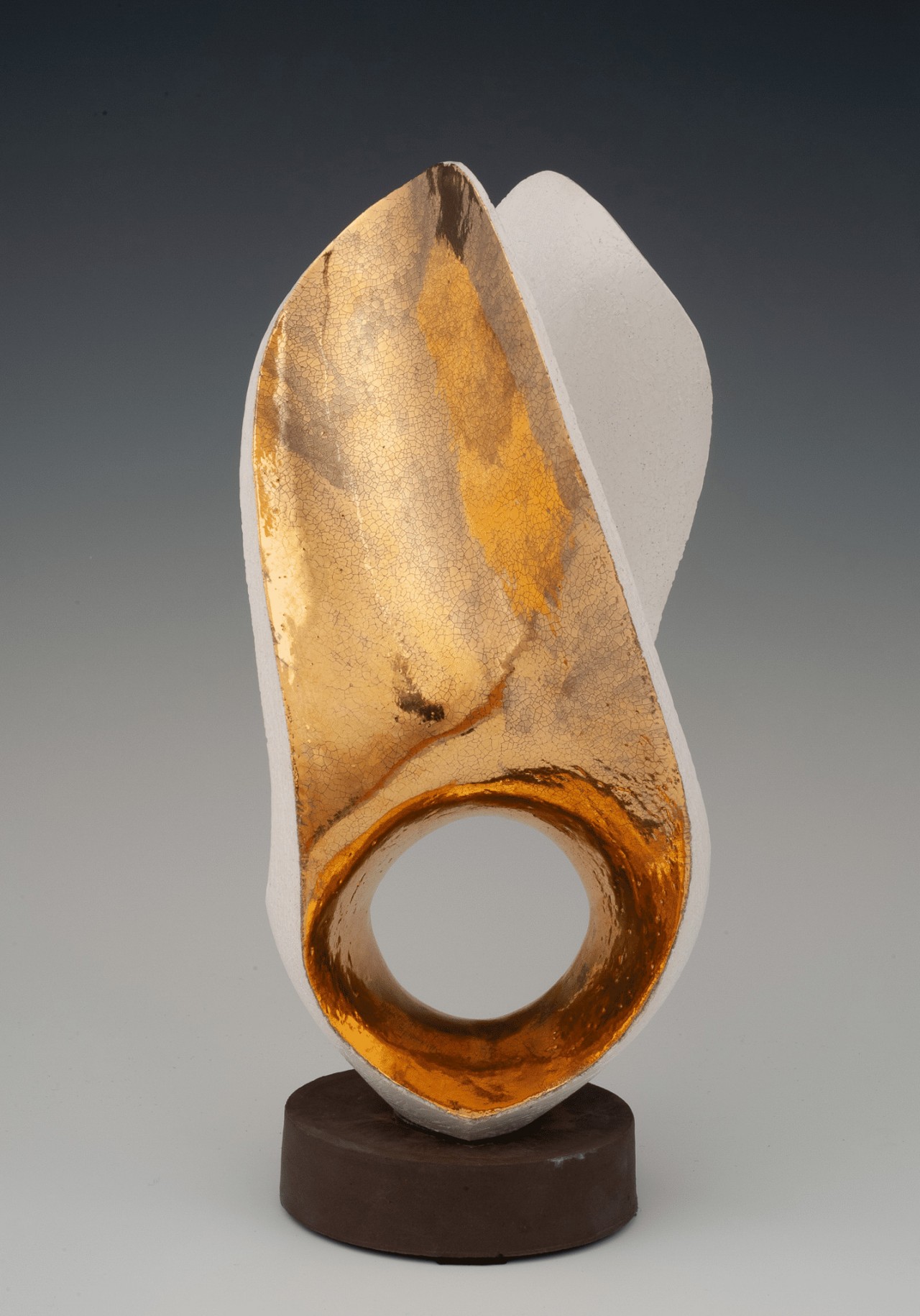
Designer: Matt Sherratt
Solar Plexus, by ceramist Matt Sherratt, reveres the Manipura chakra, governing inner fire and energy flow, drawing from nature’s organic curves and yielding captivating circular forms. Crafted mindfully through coiling, each piece is meticulously balanced for aesthetic appeal, playing with negative and positive shapes.
3. Traditional Woodworking
Dating back to 2000 B.C., ancient Egyptian art depicts well-preserved wooden furniture in tombs, showcasing early wood craftsmanship, and they were pioneers of wood varnish. Chinese, Japanese, and Roman civilizations elevated woodworking with intricate joints, functional tools, and grand structures. Additionally, time-tested wood crafting techniques, such as joinery, have stood the test of time, surpassing modern methods in durability.
Studioilse Touch Oak Coffee Table by Zanat, Bosnia & Herzigovia
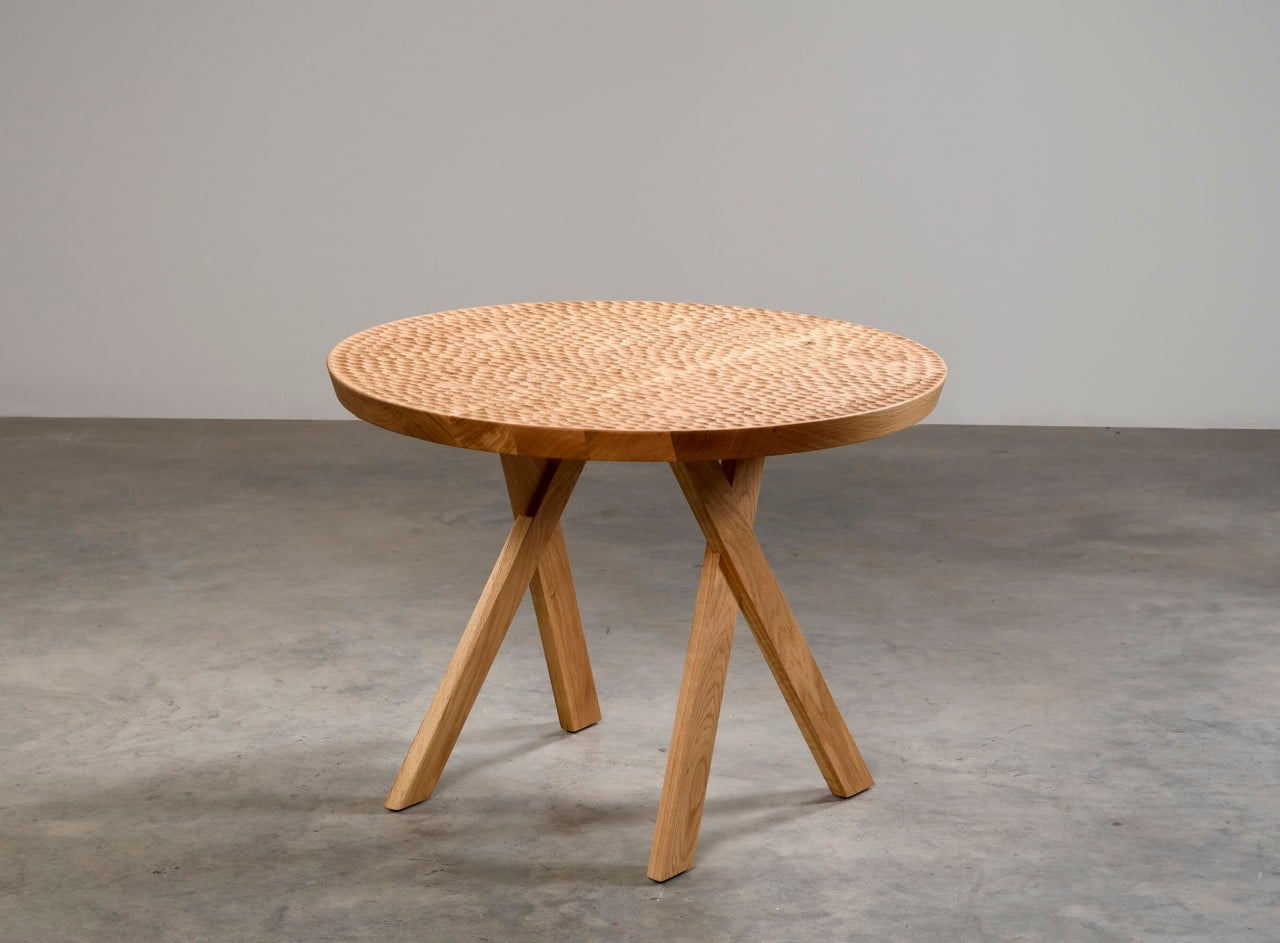
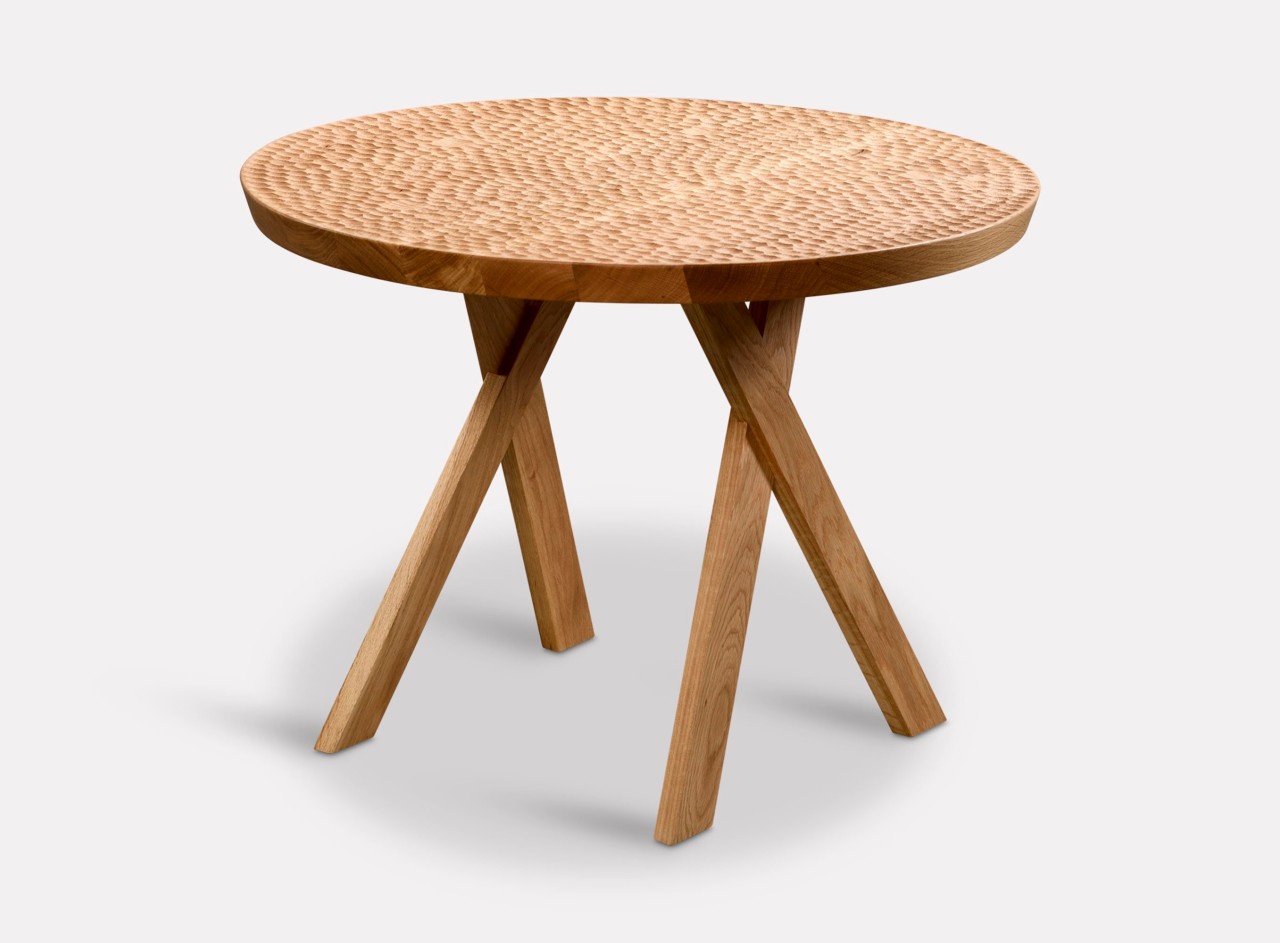
Designer: Zanat
The Oak coffee table is designed by Ilse Crawford of Studioilse, with a dimpled surface hand-carved by craftsmen using custom tools. The work highlights Zanat’s signature Konjic woodcarving technique, emphasizing masterful leg joints and a unique dimpled tabletop.
Goldfinger x Inhabit Dining Table by Goldfinger, UK
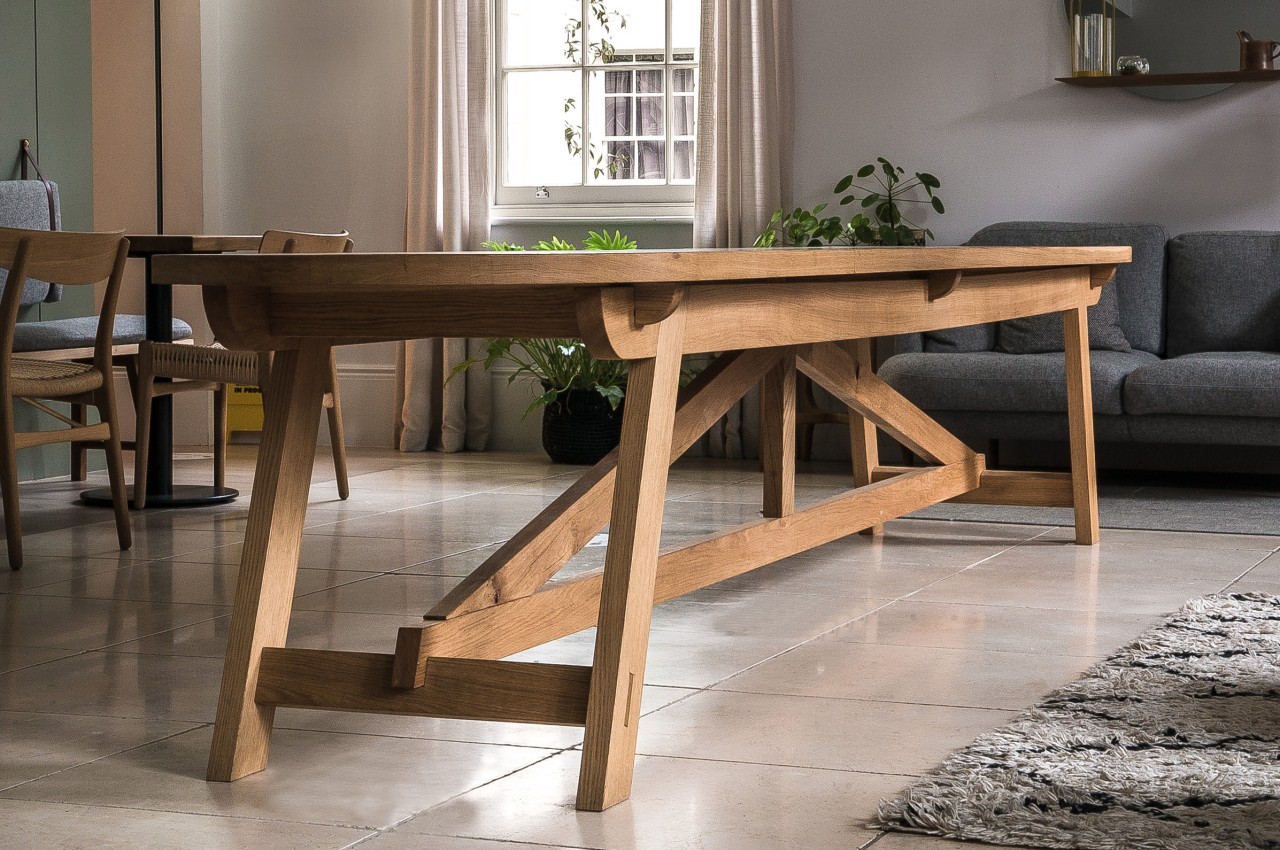
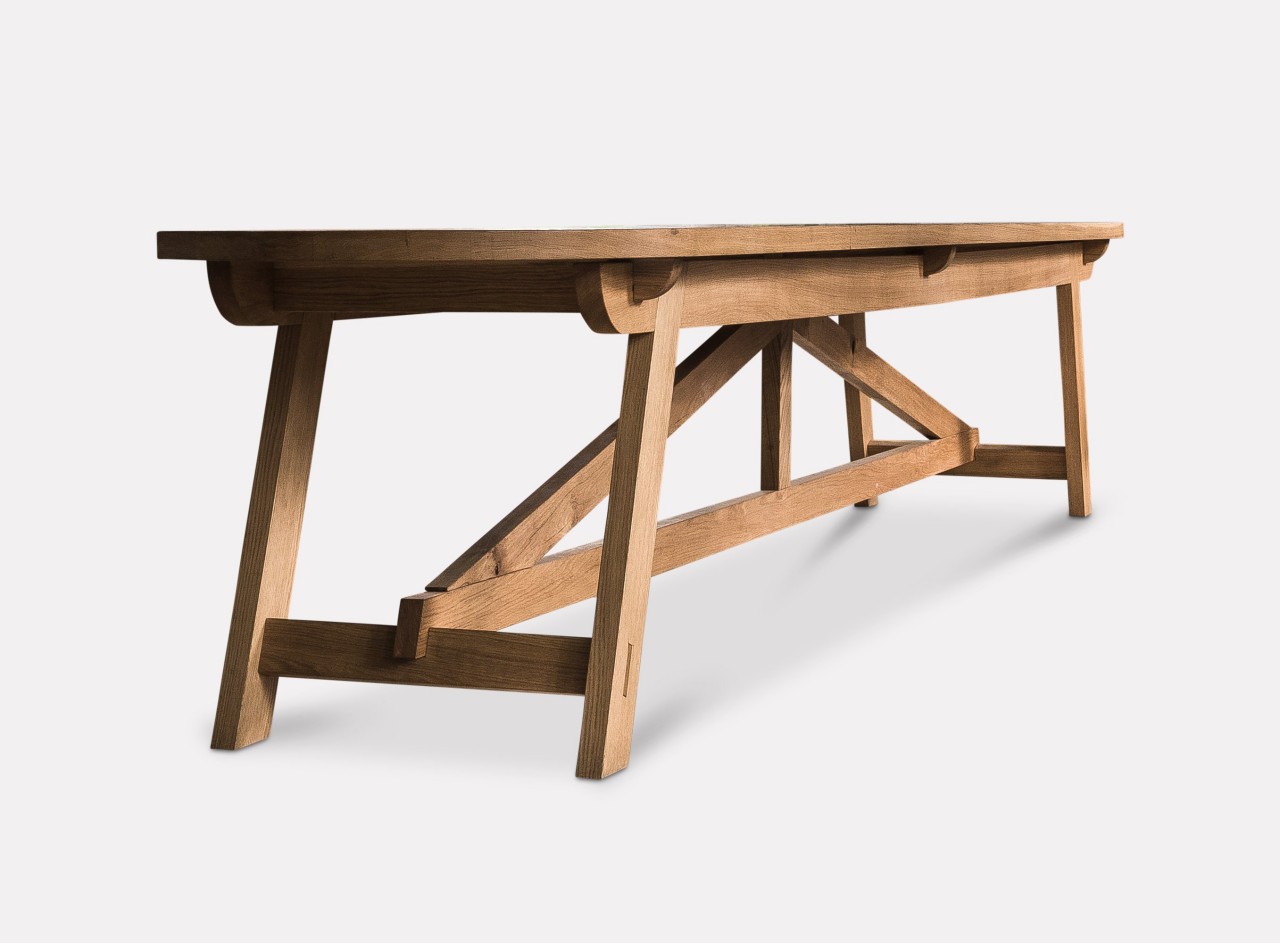
Designer: Goldfinger
Crafted using traditional timber frame joinery, the Goldfinger x Inhabit dining table features an honest form, employing solid British-grown wood for its sturdy base, while the elegant curved edges of its simple top surface harmonize seamlessly with its meticulous joinery.
4. Marquetry
Originating in ancient Egypt, marquetry, a technique involving inlaid work with recessed areas filled with small pieces of material, gained prominence as an art form in Europe in the mid-1500s. This craft intricately features geometric patterns and pictures, meticulously crafted from thin sheets of hardwood that exhibit straight-grain patterns.
Matteo Cibic The Circus Revisited Side Table by Scarlet Splendour, India
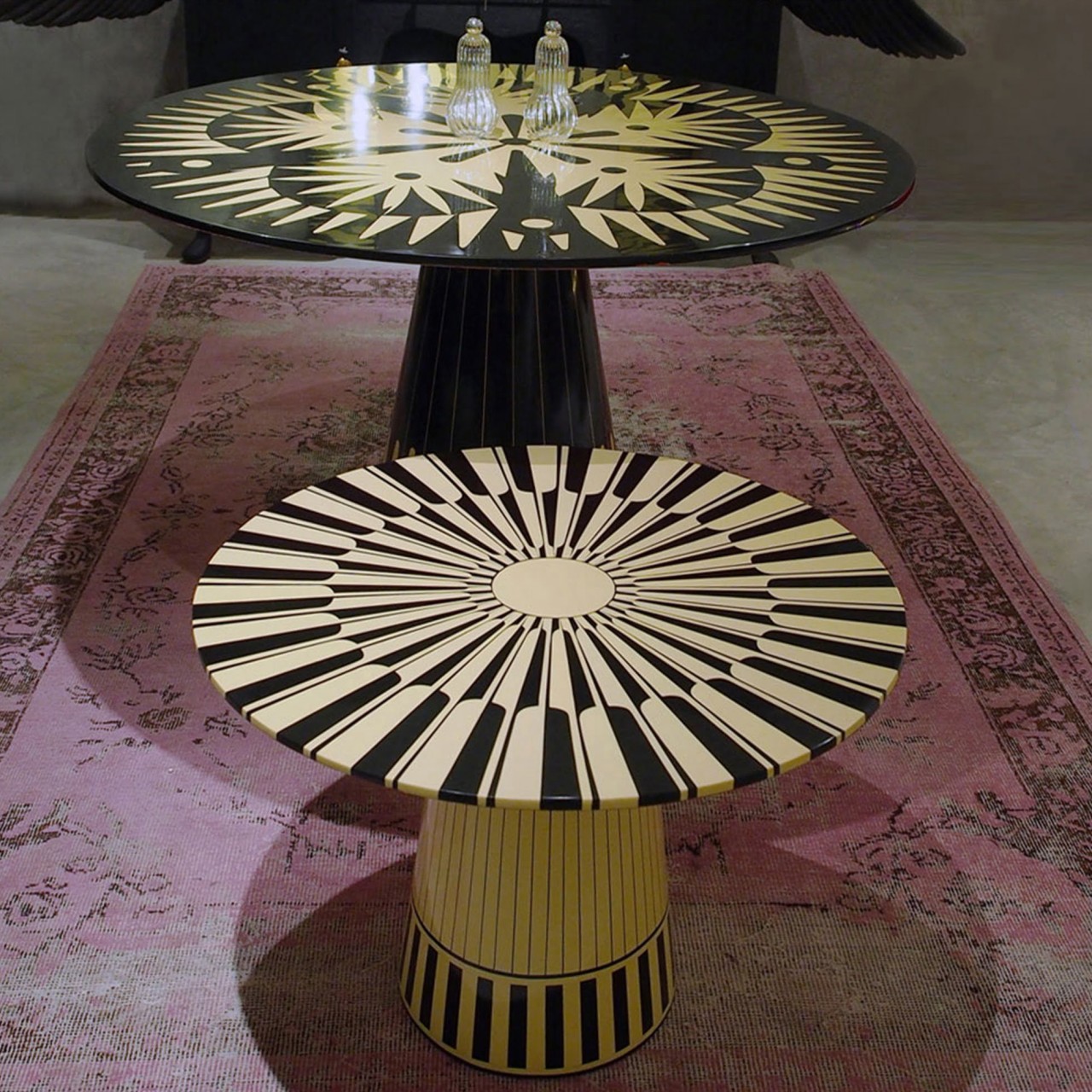
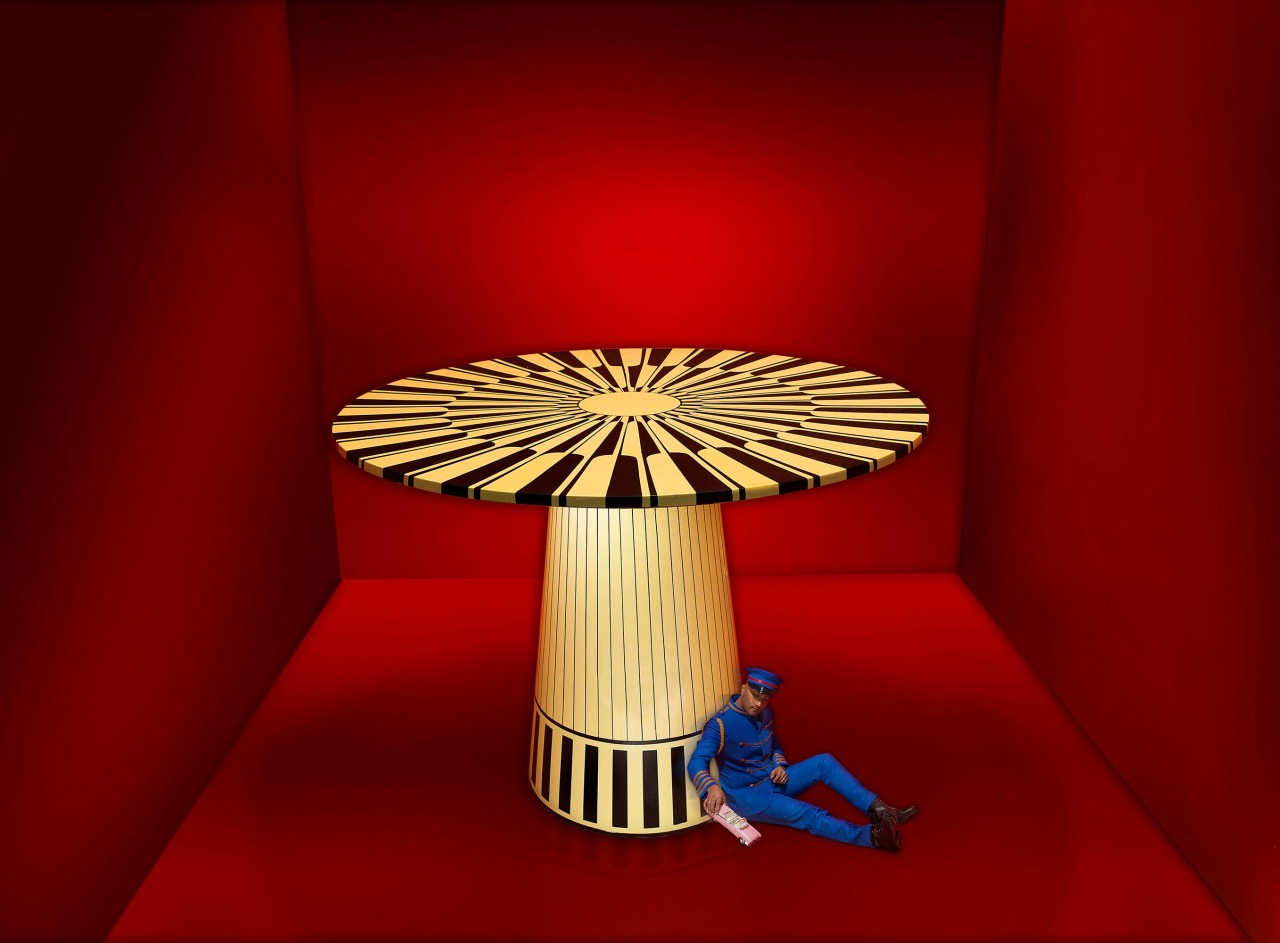
Designer: Matteo Cibic x Scarlet Splendour
The Circus table pays homage to traditional Indian marquetry with its detailed geometric design. Created by Italian designer Matteo Cibic, it exhibits bold patterns inlaid with black and vanilla resin, utilizing this modern and sustainable substitute for traditional materials like ivory and bone.
Marquetry Mania Wooden Bowl by Naba Debs, Beirut
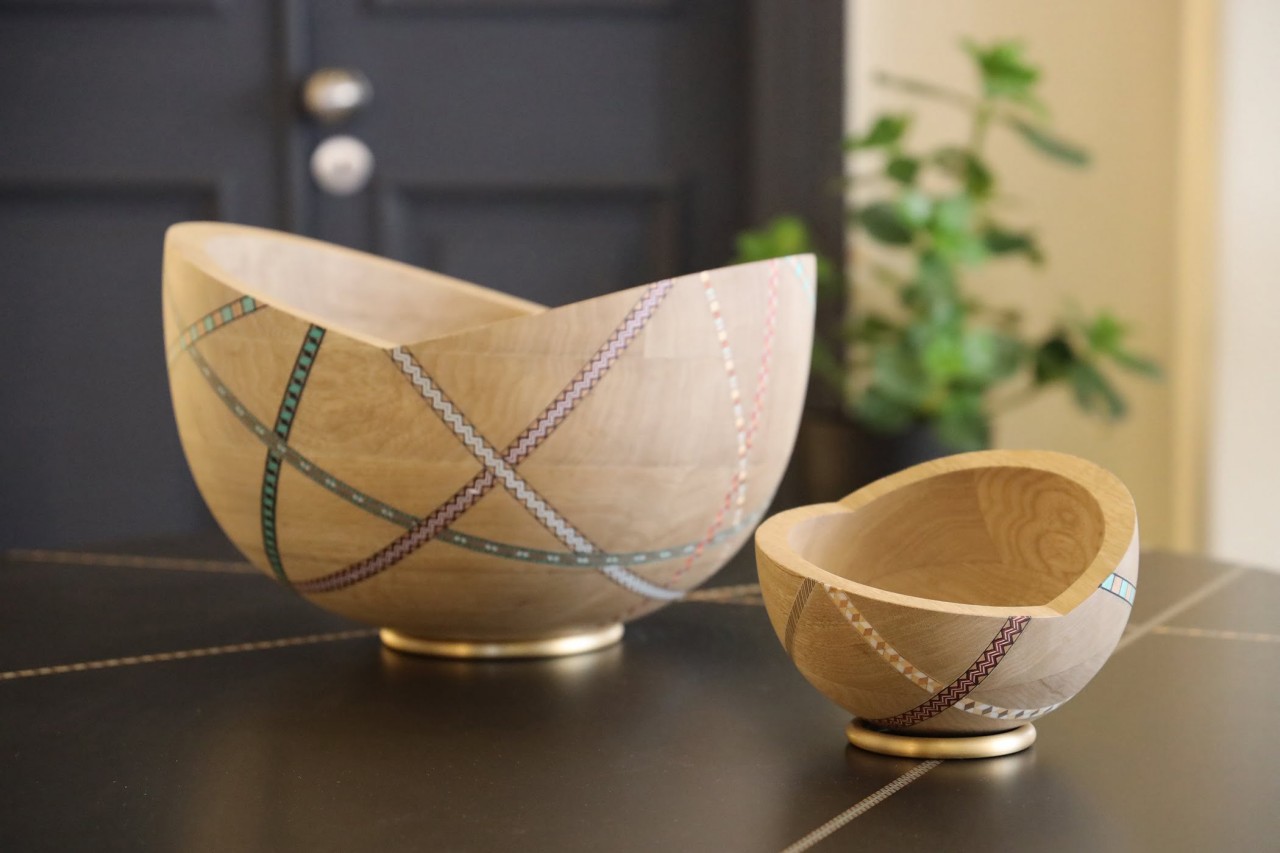
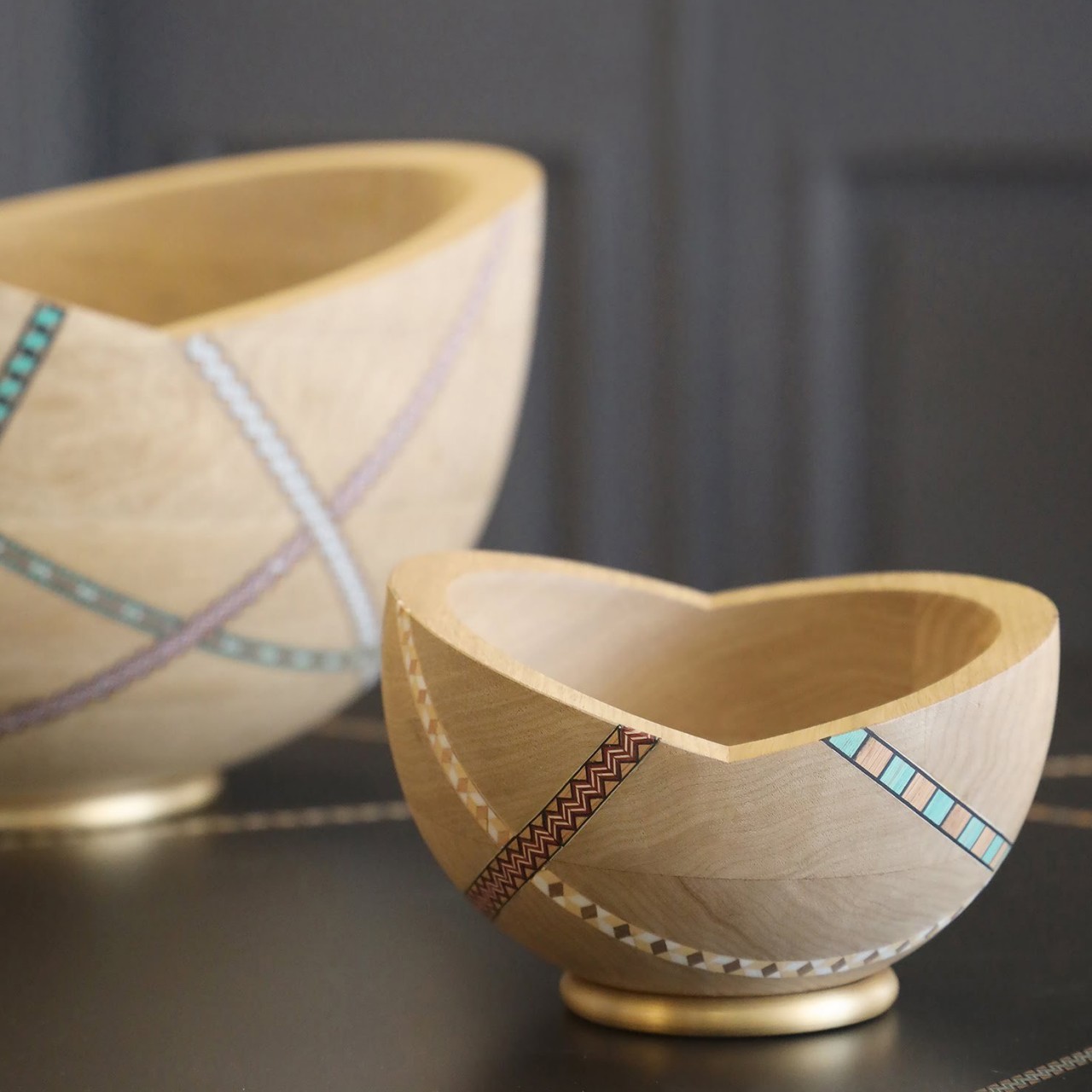
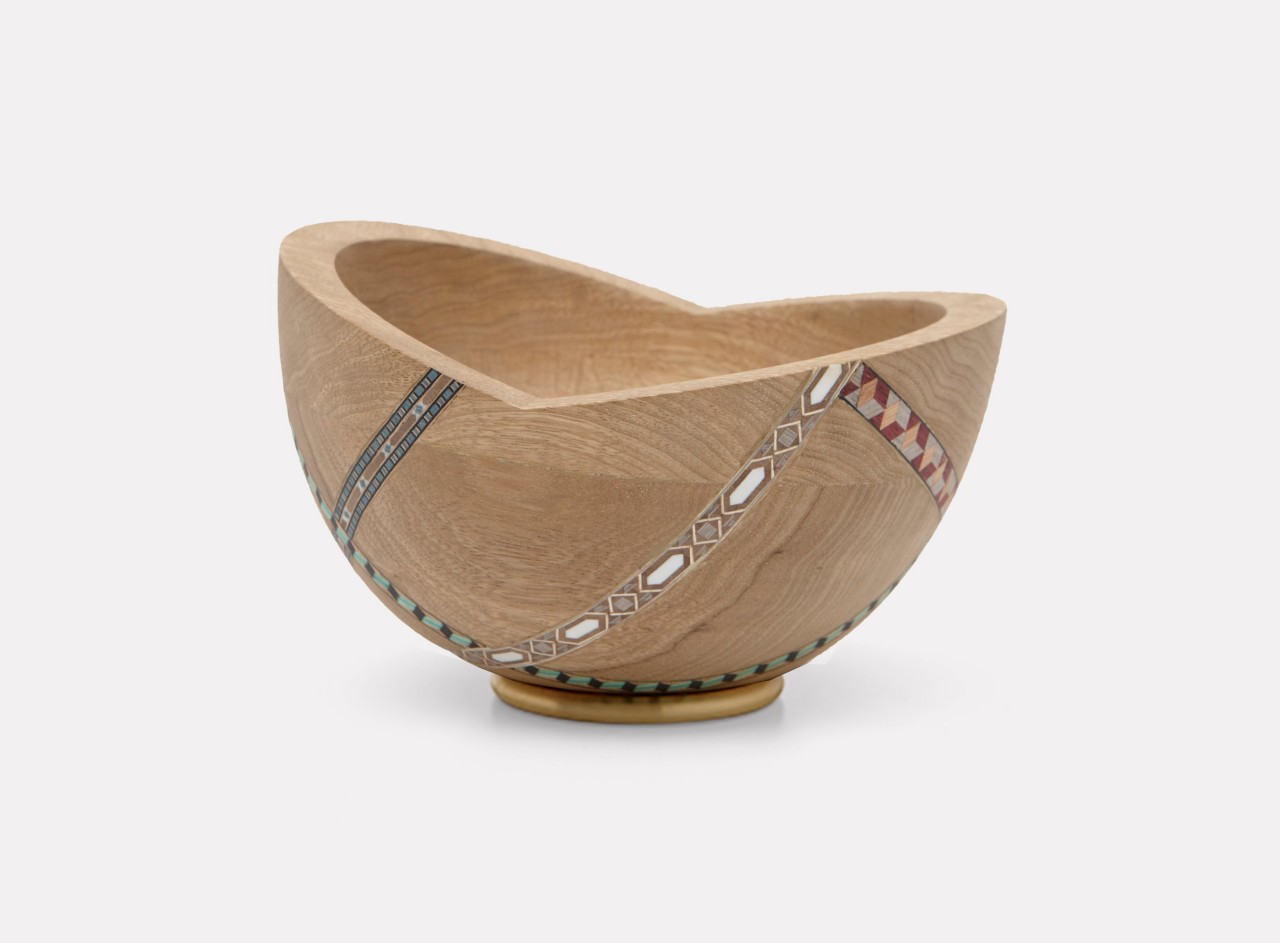
Designer: Nadia Debs
The Marquetry Mania bowl is a handcrafted wooden piece adorned with an intricate marquetry pattern, celebrating the traditional craft. Its unique geometric shape is achieved through hand carving and assembling several pieces, creating a smooth, tactile surface embellished with strips of marquetry displaying various patterns.
5. Metal Craft
The roots of metalcraft lie in ancient civilizations like Egypt and the Indus Valley, as archaeologists have discovered crucibles from copper slag signifying early metallurgy. Displayed in various museums around the world, metal was used to craft tools, bowls, figures, and masks from materials such as bronze and gold, shaping a rich history of creativity.
Soaring in Fuji Sculpture by Viya Home, India
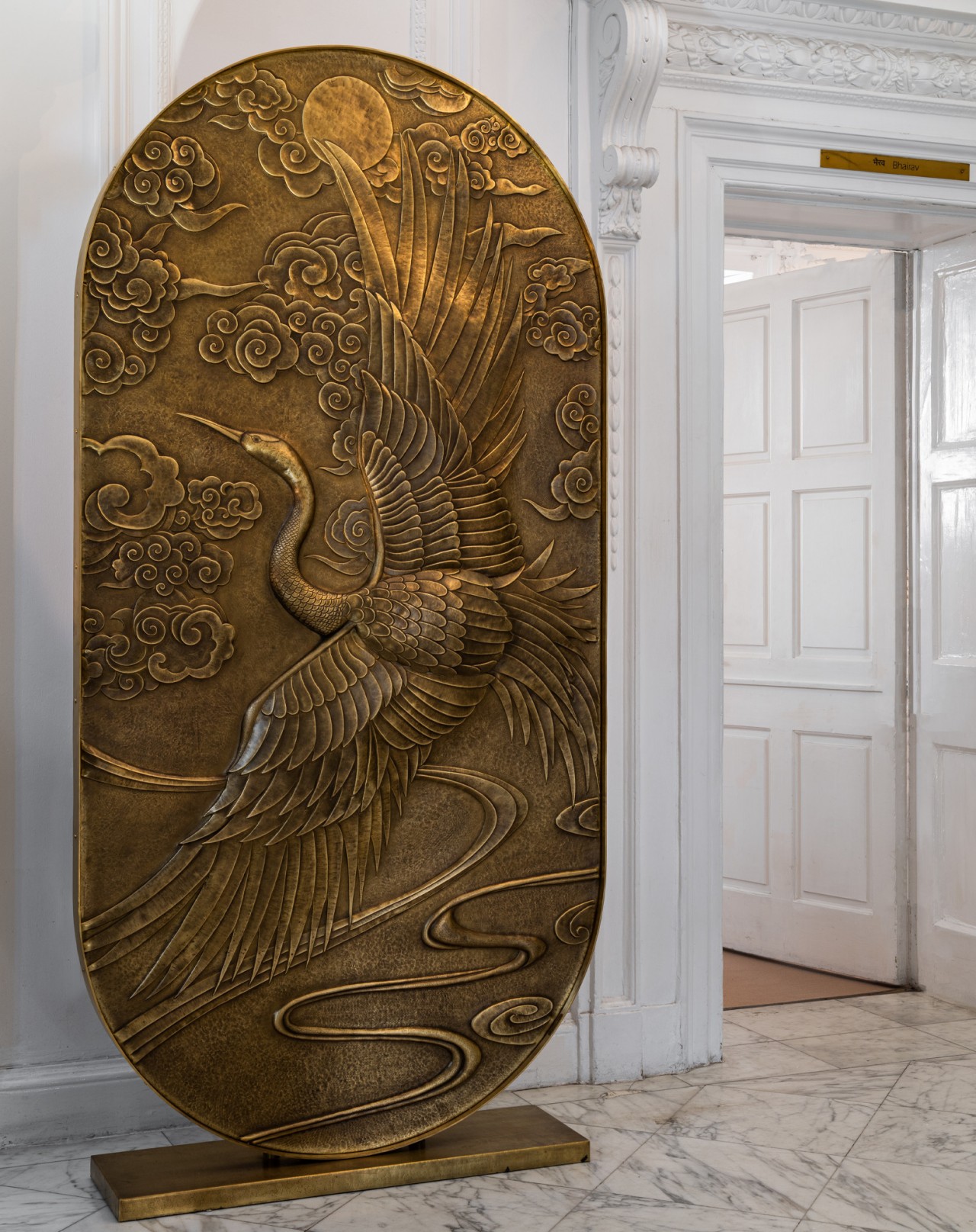
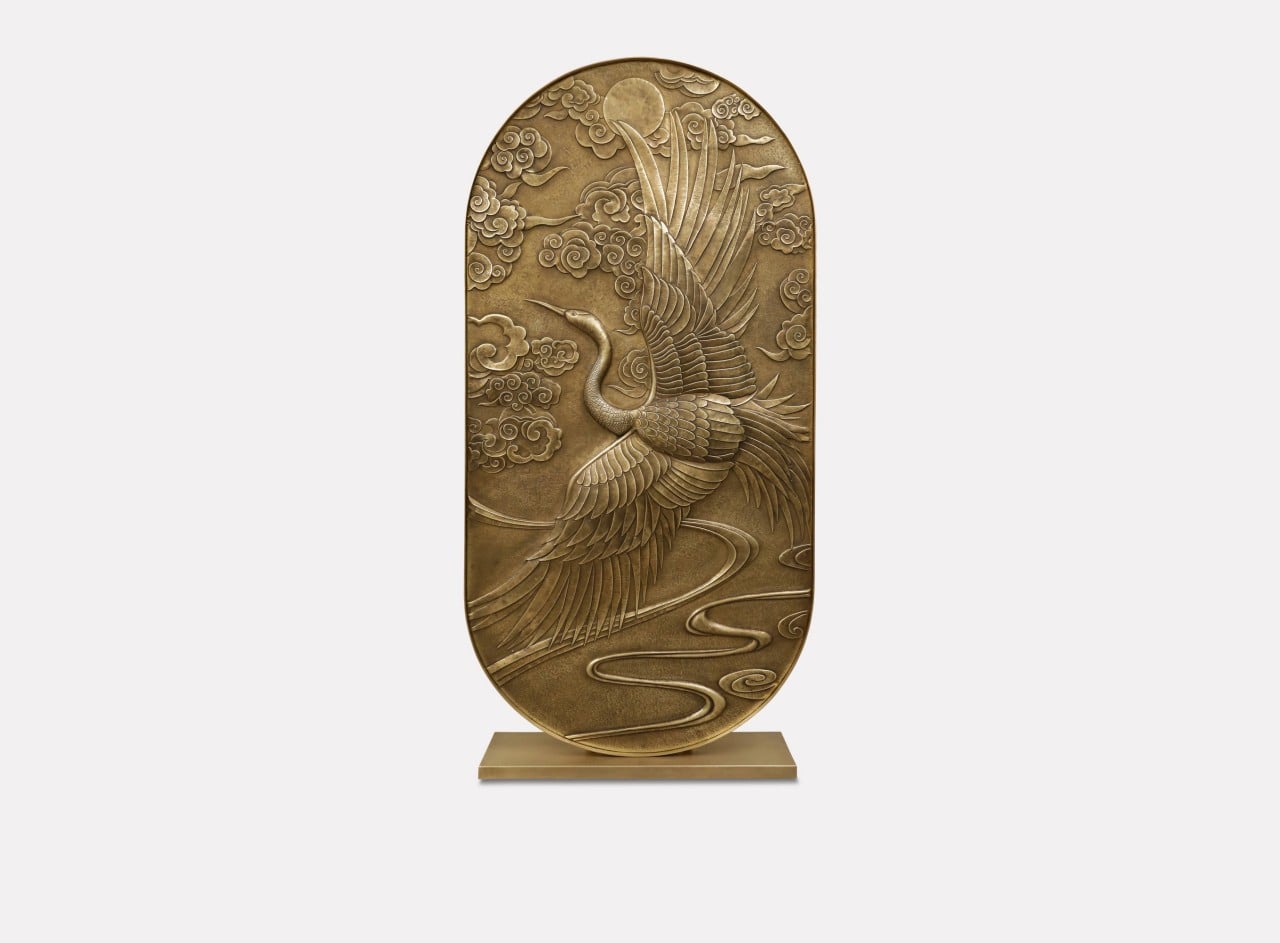
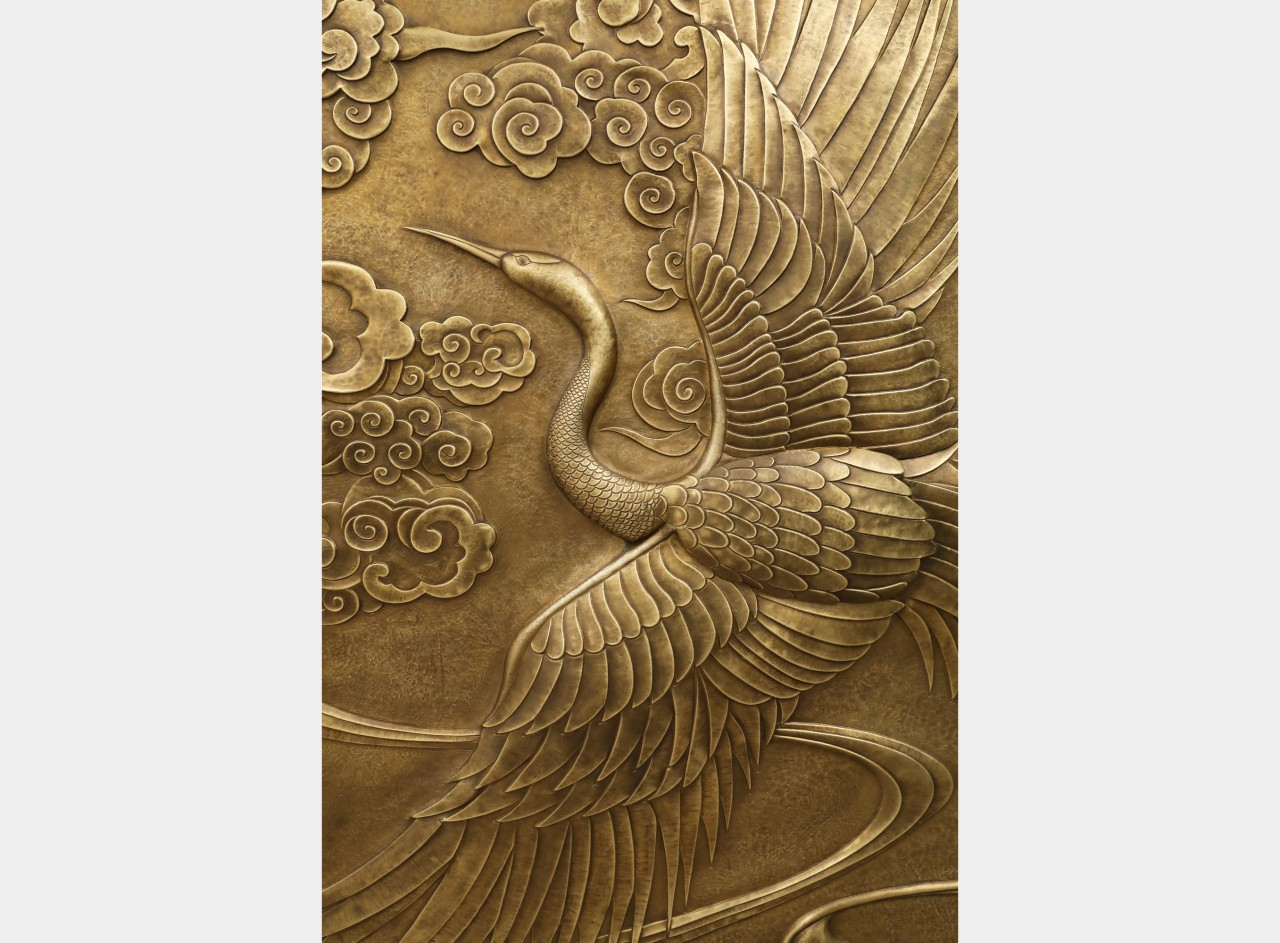
Designer: Viya Home
“Soaring in Fuji,” a mesmerizing brass repoussage artwork by designer Vikram Goyal, presents a unique wall mural featuring a graceful crane in flight. Expertly crafted using the repoussage technique, it blends Indian artistry and Japonisme influence, symbolizing strength, good fortune, rejuvenation, and longevity.
Verdigris Brass Dented Bowl by Ane Christensen, UK
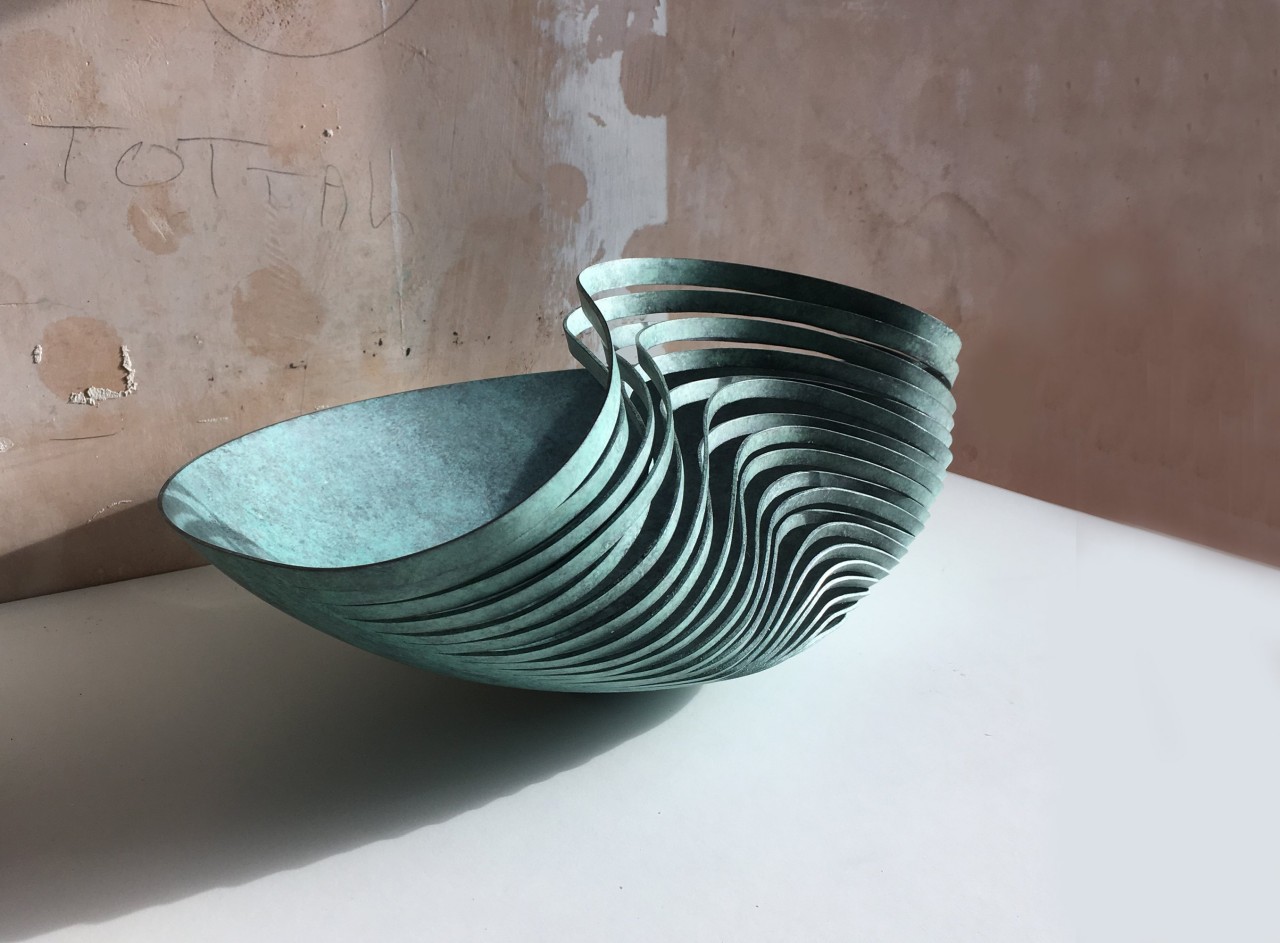
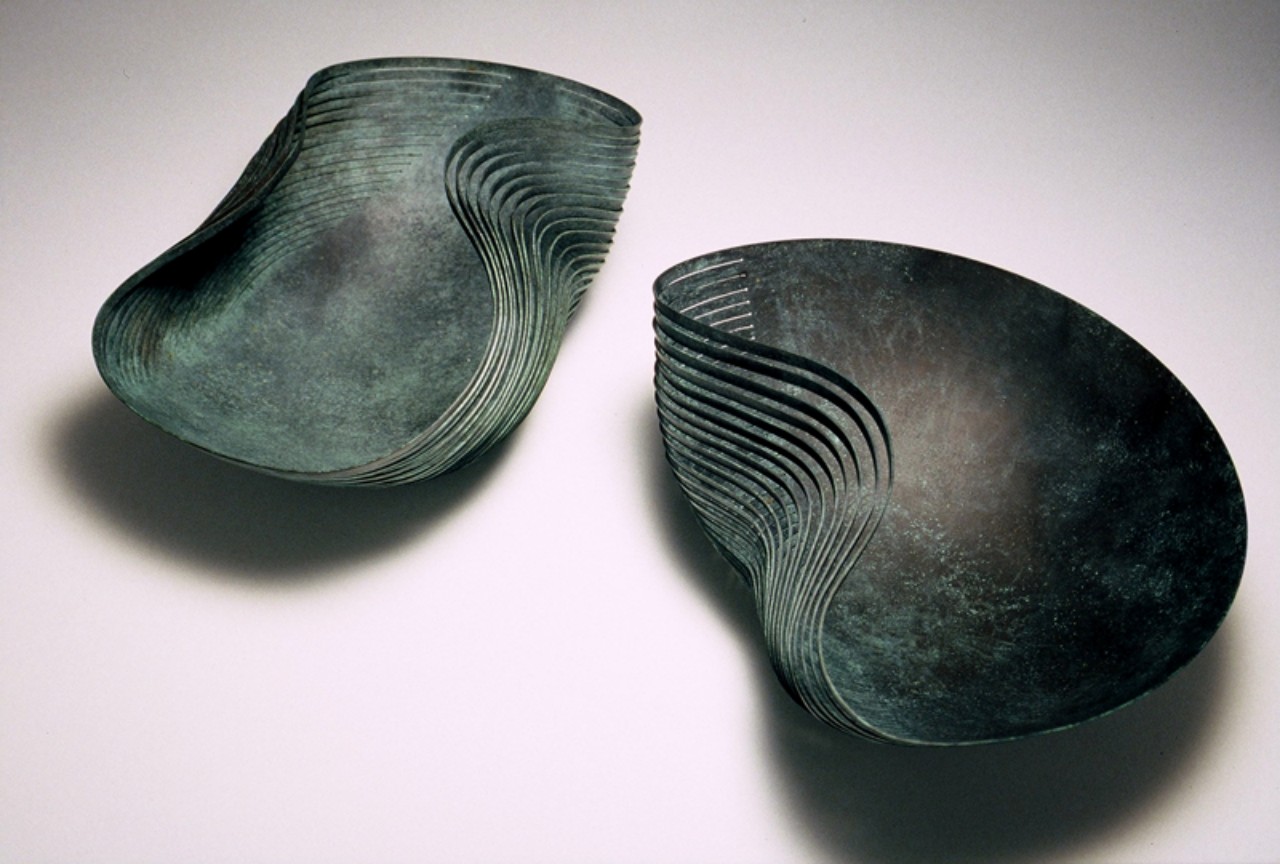
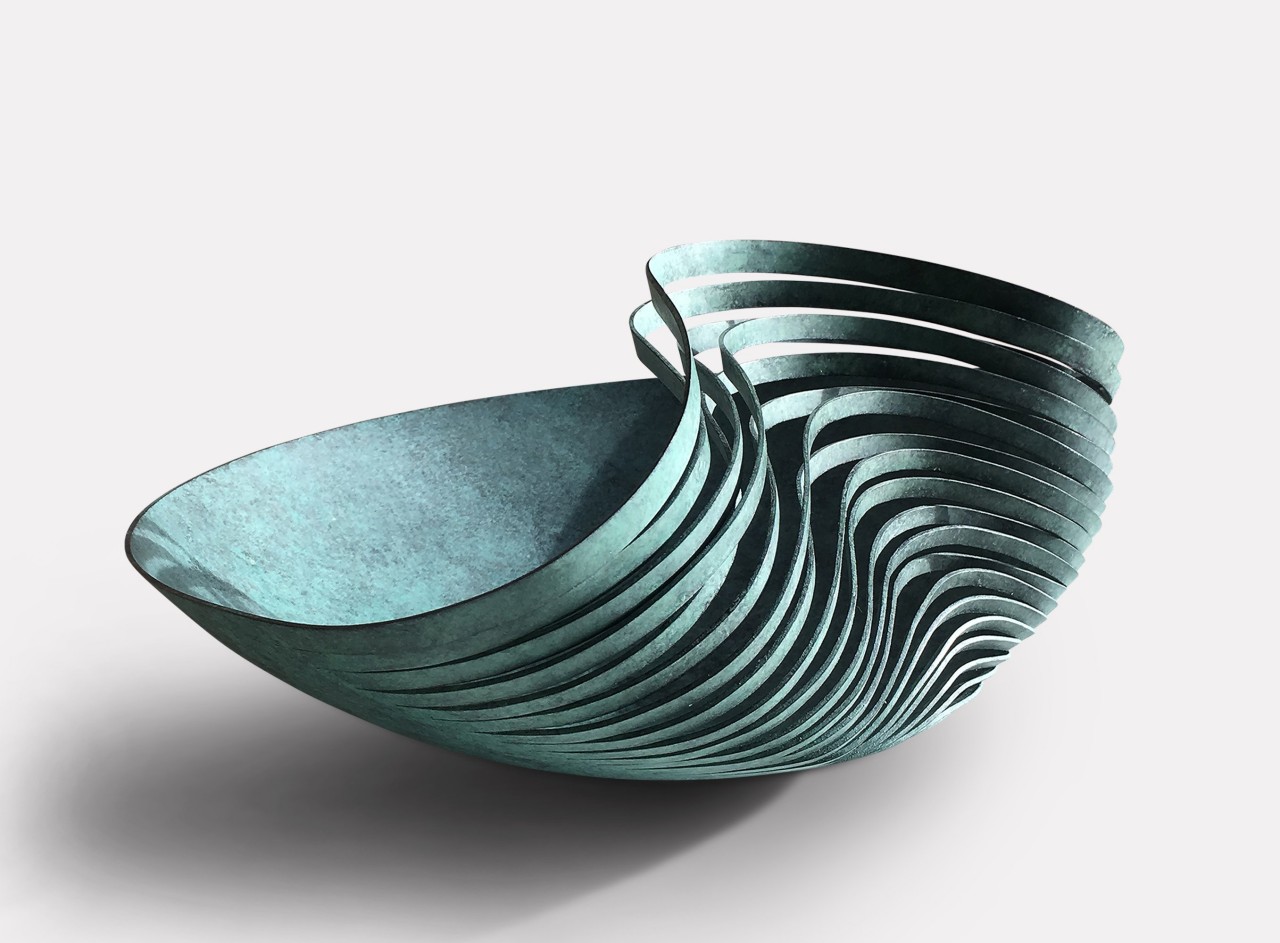
Designer: Ane Christensen
The Verdigris Brass Dented Bowl by Ane Christensen embodies Scandinavian aesthetics, highlighting the form’s purity. Crafted from a single metal piece, it combines a simple, substantial bowl with intricately woven metal ribbons, forming a dynamic pattern through hand-cutting and folding.
Staiths II Console Table by Novocastrian, UK
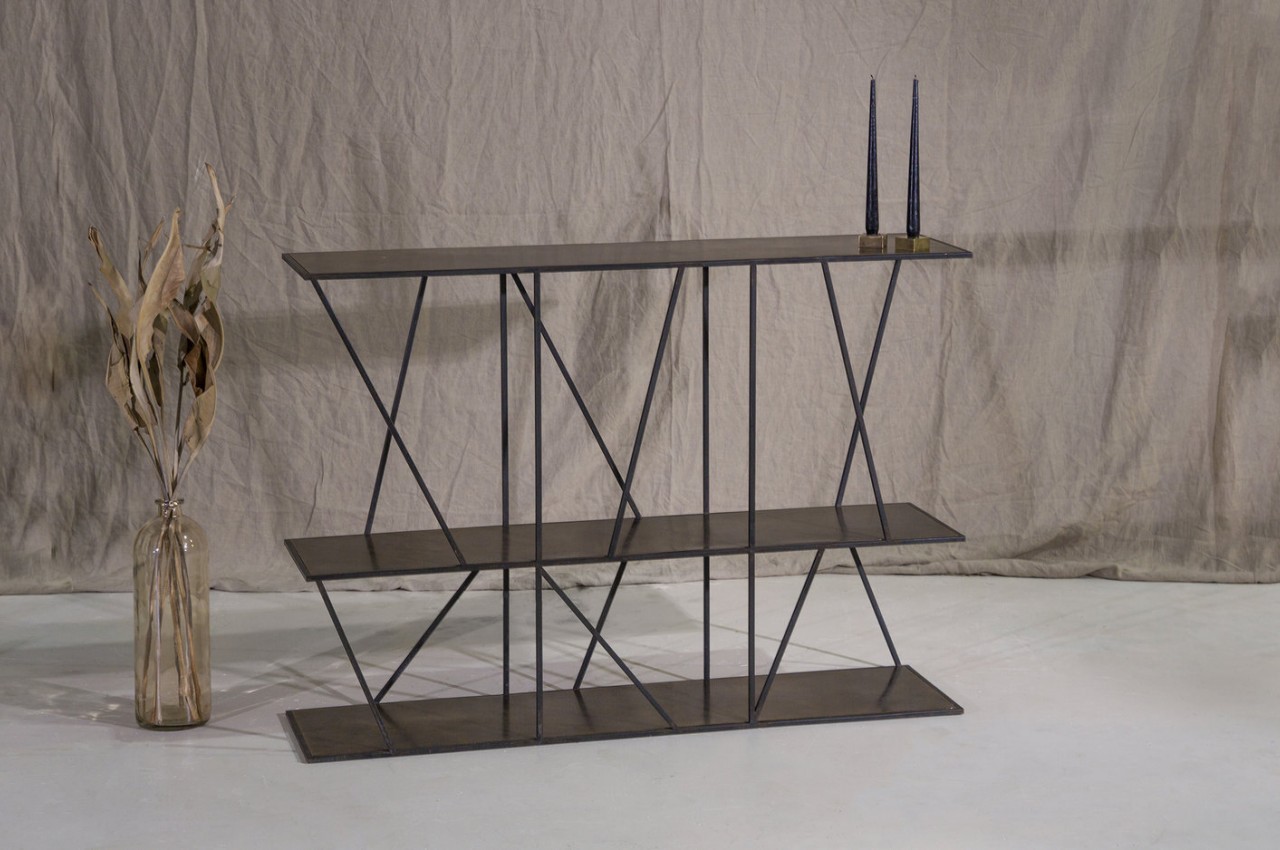
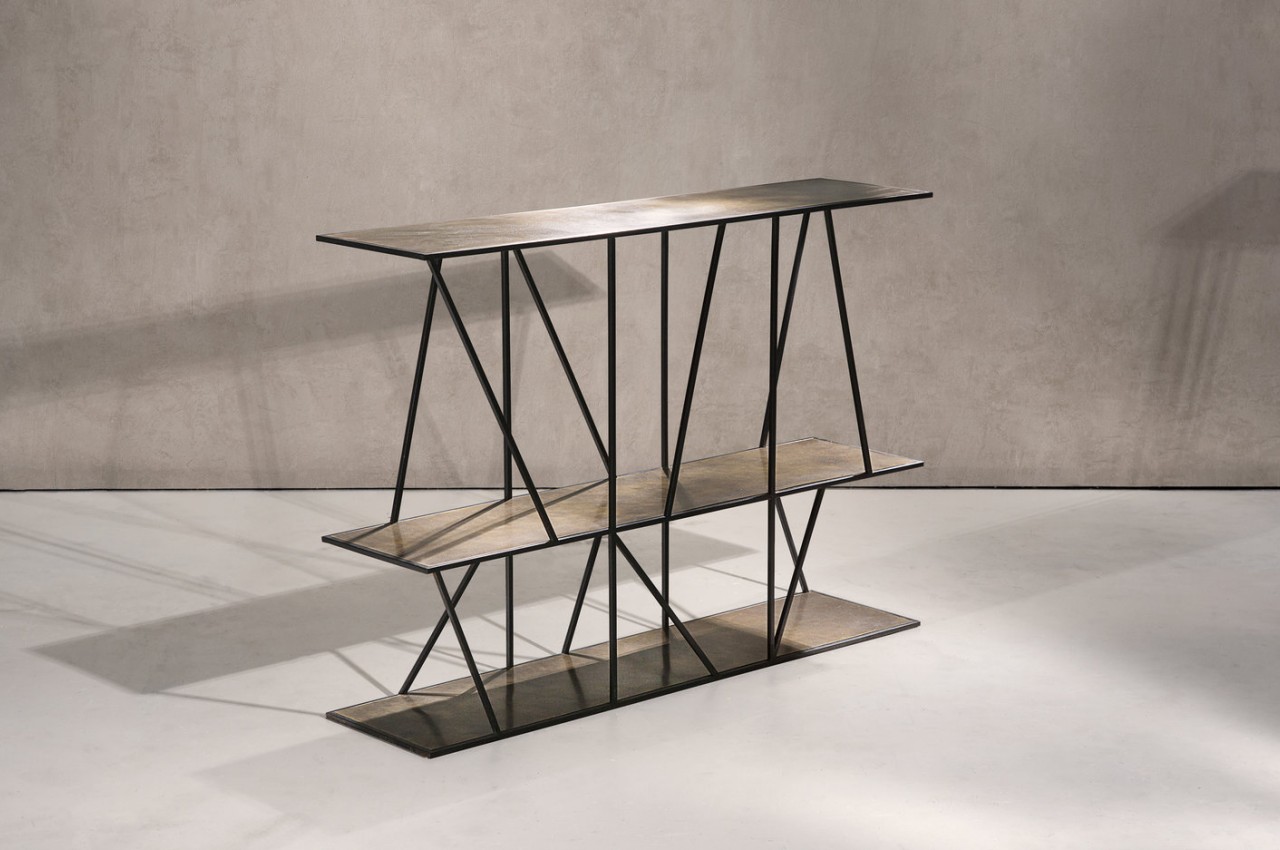
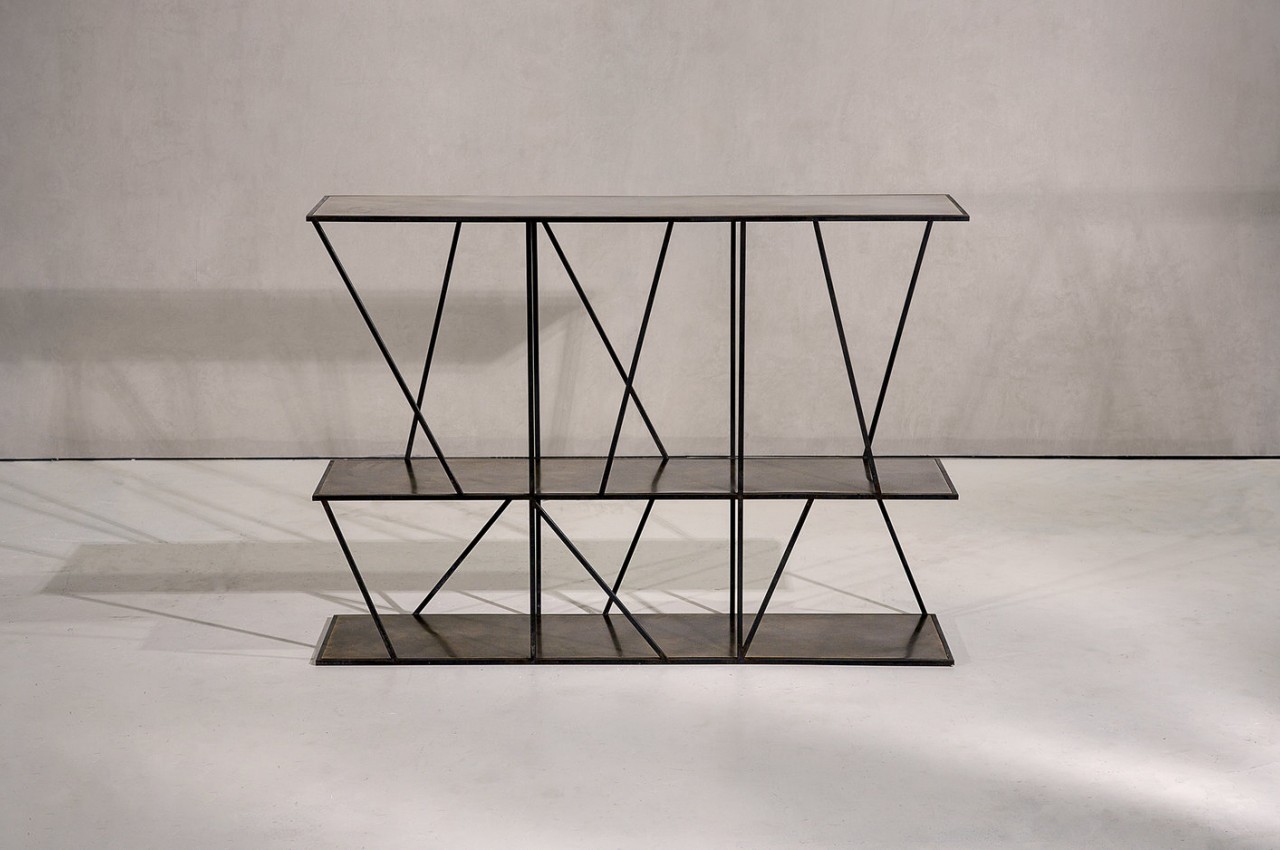
Designer: Novacastrian
The Staiths II console table embodies North East England’s industrial legacy with sculptural blackened steel and patinated brass, expertly crafted by Novocastrian artisans. It elegantly balances the beauty of raw materials with strength and grace.
6. Persian and Oriental Rugs
Persian and Oriental rugs are hand-knotted rugs from Asia, with Oriental rugs spanning various Asian countries while Persian rugs are specific to Iran, known for their intricacy and high knot count, with some dating back over 2,400 years. Both have a centuries-long cultural history of carpet weaving and are highly valued for their craftsmanship and cultural significance, with knot counts reaching as high as 500 knots per square inch.
Malini Taj Mahal Wool and Silk Rug by Sahrai Milano, Italy
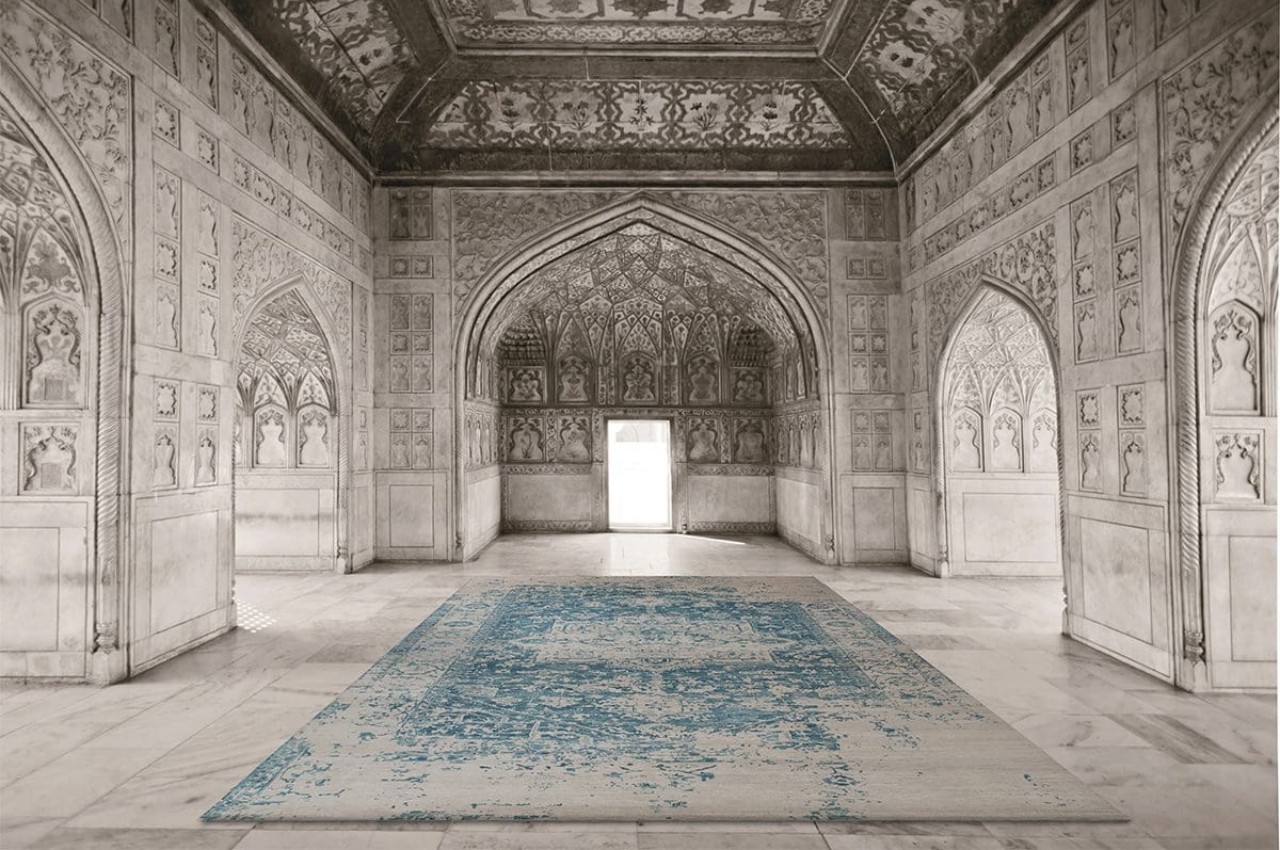
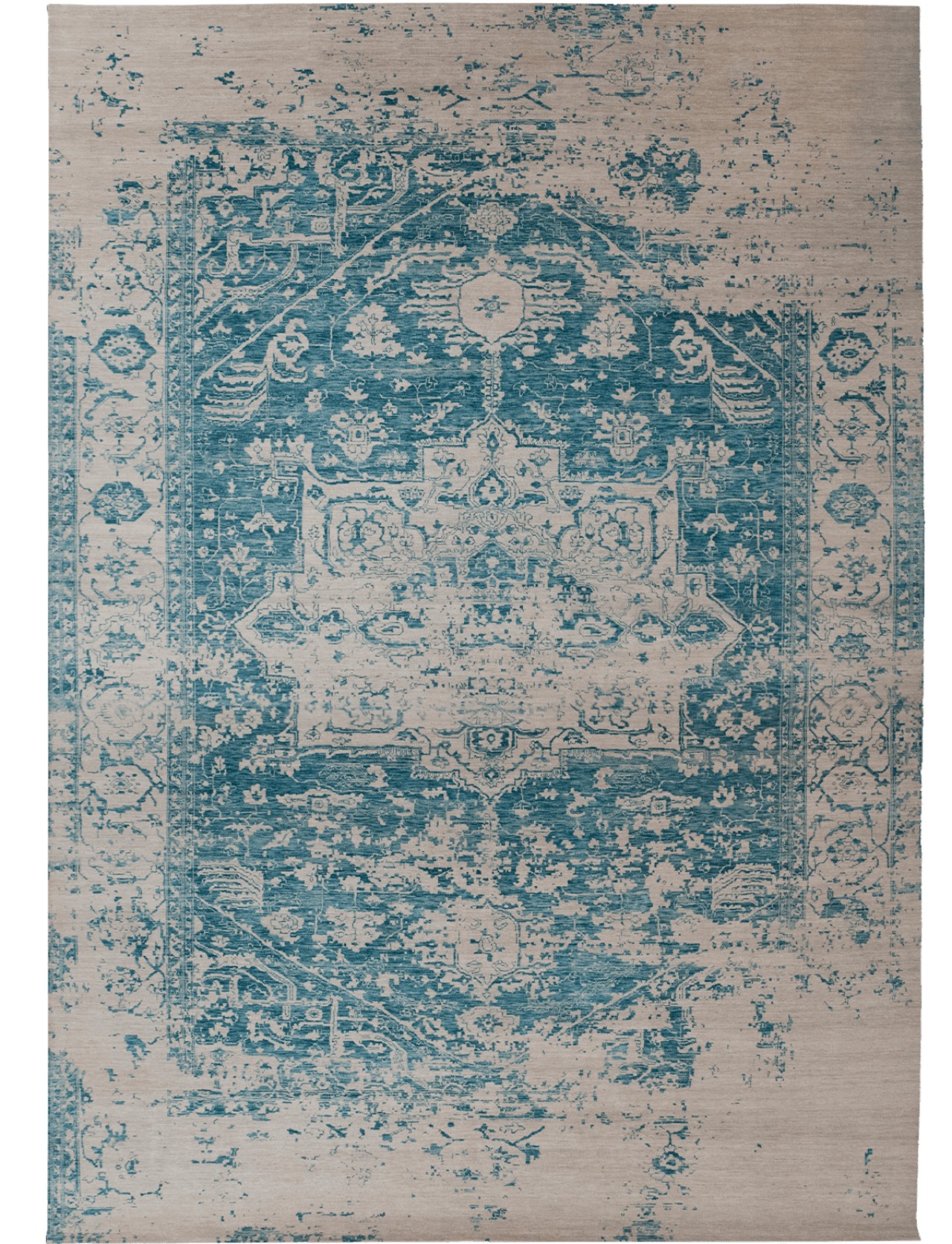
Designer: Sahrai Milano
The Malini wool and silk rug features a medallion surrounded by floral motifs, with an uneven, faded border pattern for a vintage feel while subtle electric-blue hues create depth and texture. Each piece is hand-knotted by master rug makers using traditional techniques.
7. Textile Weaving
The history of textile weaving dates back to the Neolithic era and evolved in Egypt, Mesopotamia, India, China, and Peru. Evidence suggests India is one of the earliest countries to start textile weaving, dating around 3000 BC. However, the Industrial Revolution introduced mechanization, and modern weaving now combines traditional craftsmanship with technology to create a diverse range of fabrics and textiles.
Paisley Rectangular Cashmere Cushion by Janavi, India
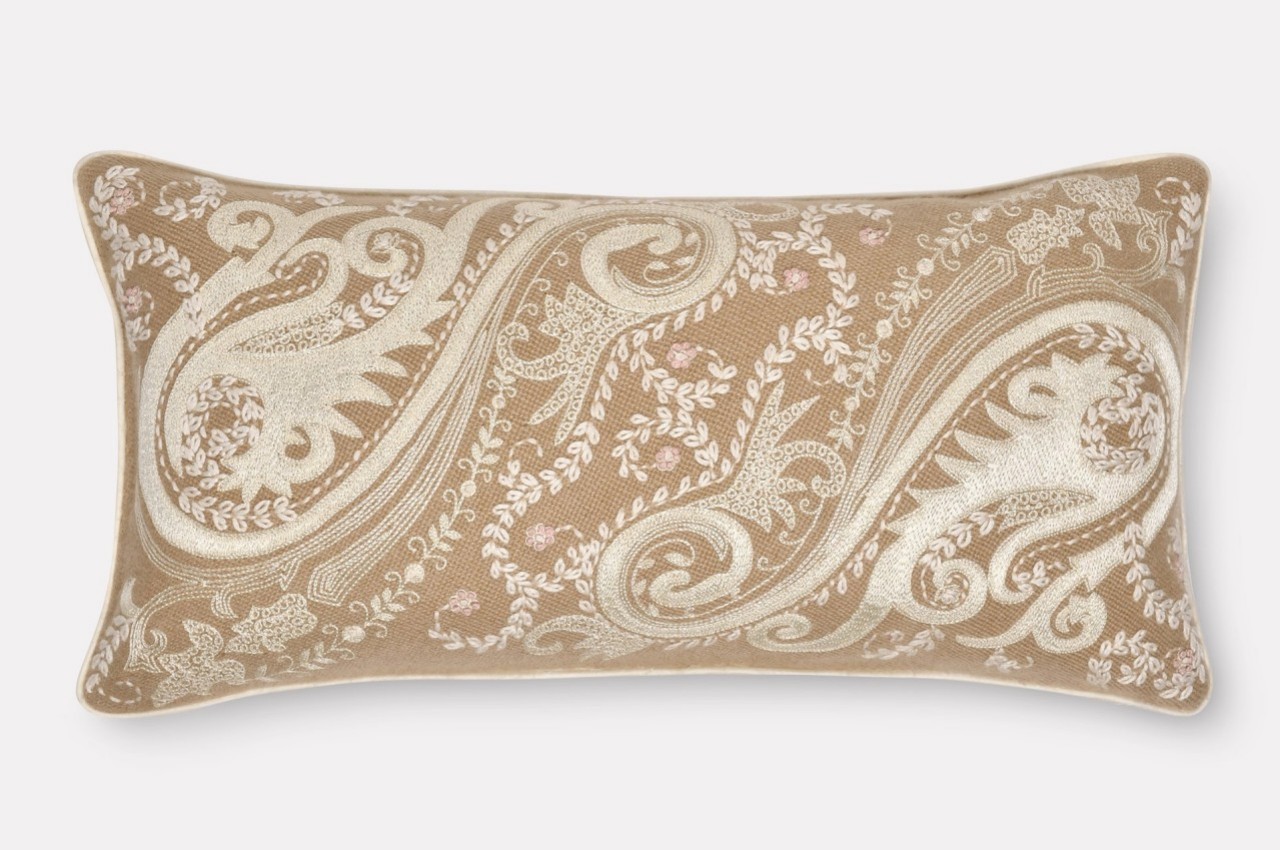
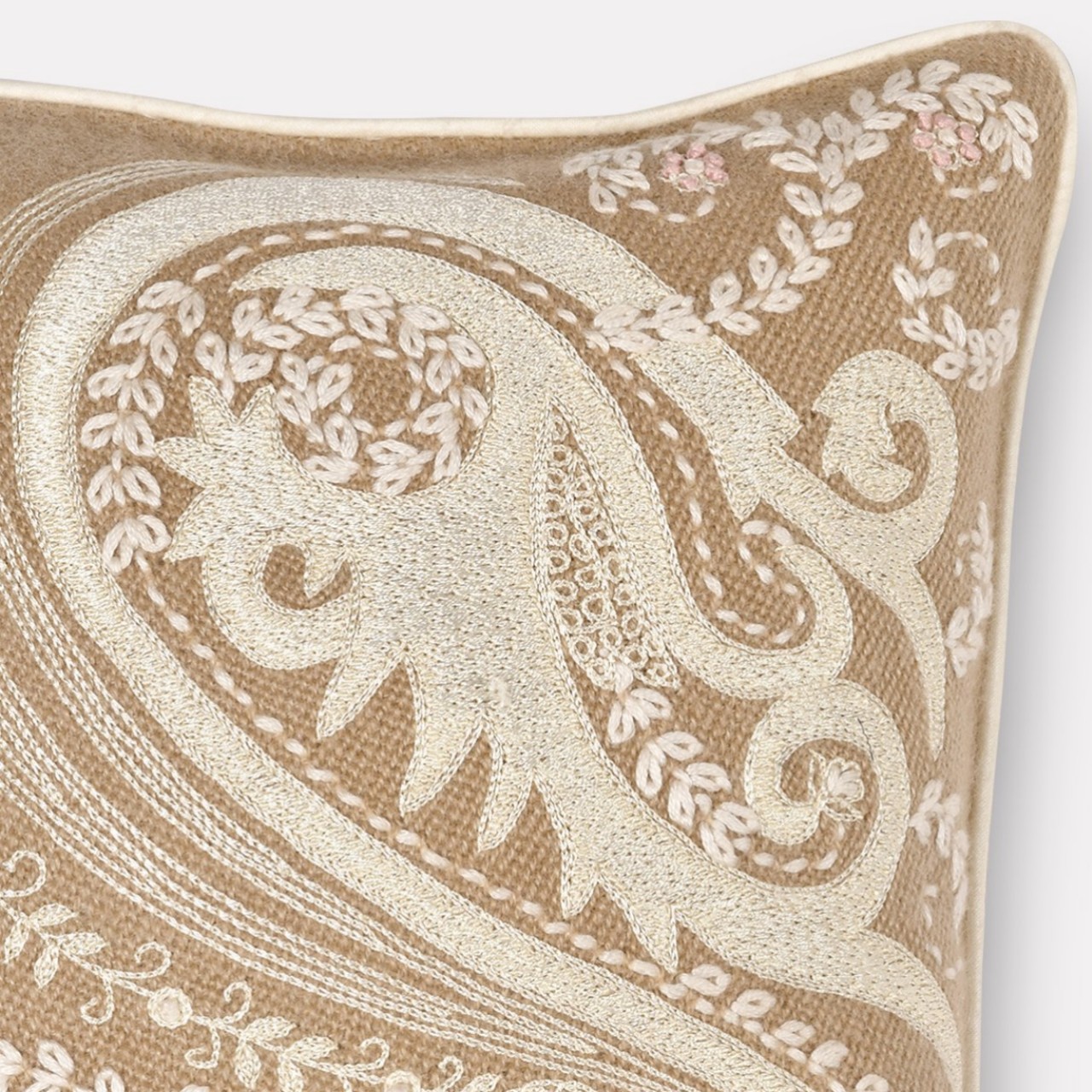
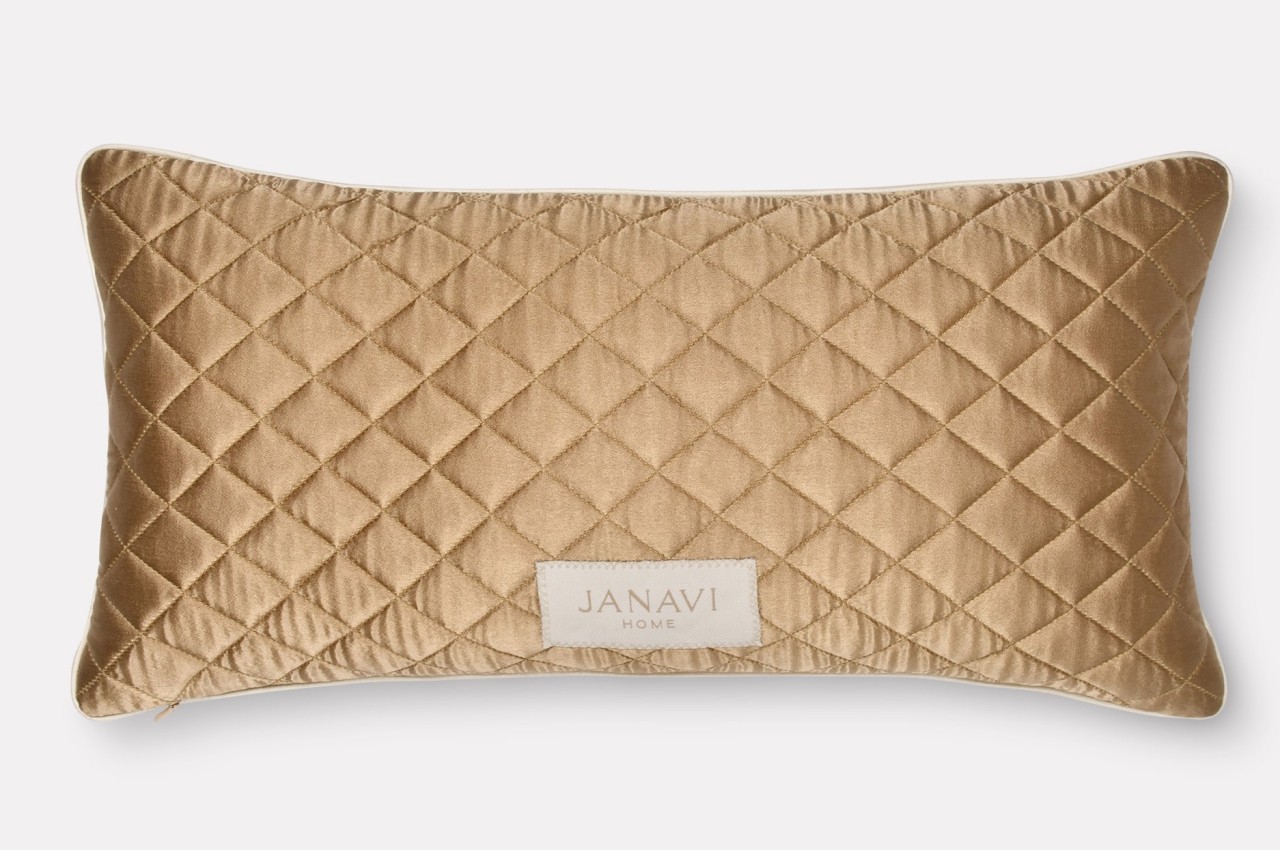
Designer: Janavi India
This Paisley Rectangular cushion showcases ivory and peach hand-embroidered paisley on taupe cashmere. The cushion embodies the hues of nature and India’s heritage through skillfully woven luxury textiles of cashmere, merino wool, and Egyptian cotton.
Bengal Tiger Throw by Saved NY, USA
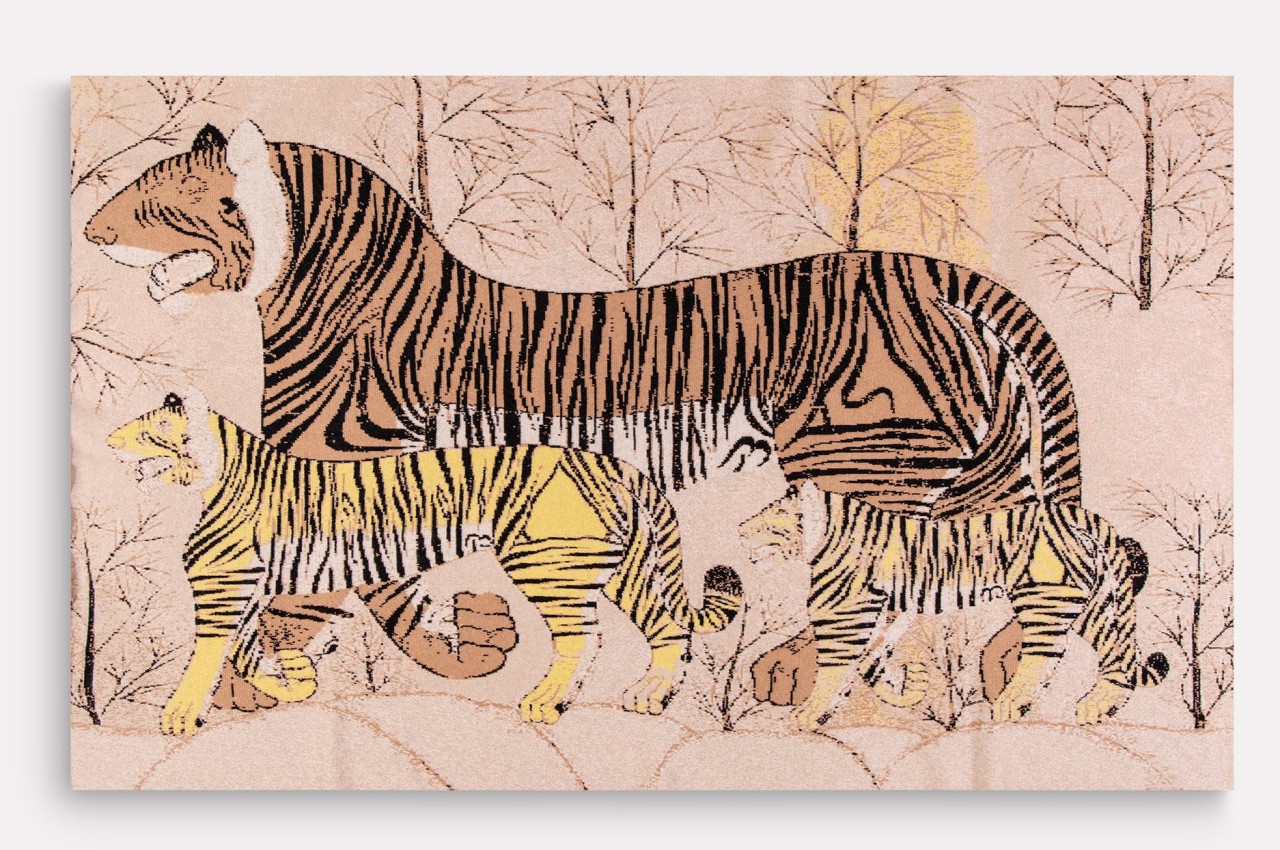
Designer: Saved New York
A jungle scene, showcasing a family of tigers, embellishes this opulent cashmere throw. The Bengal Tiger Throw captures the creature’s grace and beauty through intricately woven cashmere, sourced from the finest sustainable materials.
8. Stone Sculpting and Carving
Hand sculpting, tracing its origins to prehistory, involved the manipulation of clay and stone, while Greece’s distinctive approach gave rise to timeless classical masterpieces, and Egypt’s enduring stone carvings artistically reflected the concept of eternity. Rock engravings emerged worldwide as primal art, spanning Saharan Africa to Australia, while India’s enduring stone-carving tradition, passed down through generations since the 7th century B.C., continues to thrive.
Arc Limestone Stone Carving by Zoë Wilson, UK
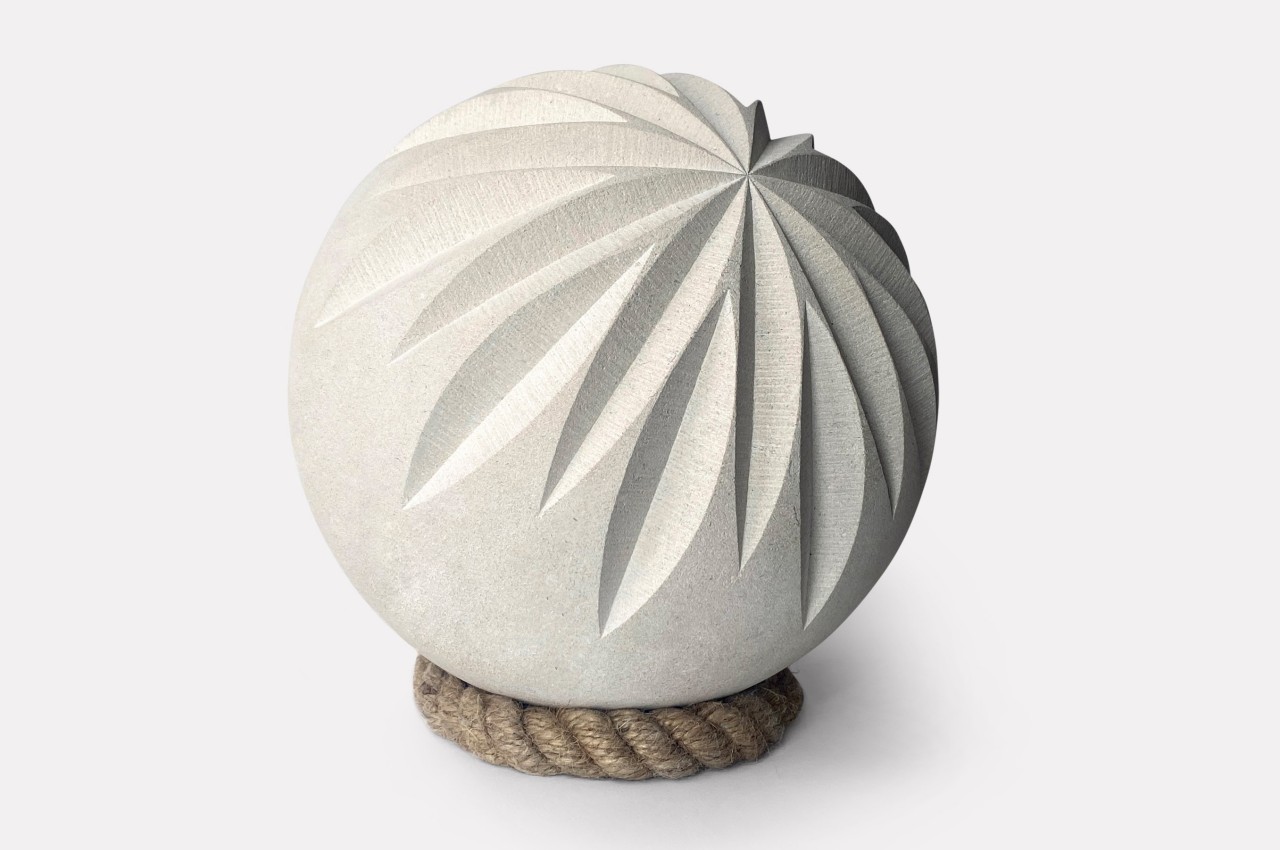
Designer: Zoe Wilson
British stone carver Zoë Wilson’s “Arc” is a striking limestone carving celebrating spherical geometry. Handcarved from Portland stone with mallet and chisel, its ten-petal center achieves a crisp yet soft fusion, intricately converging into a timeless and modern design adaptable to diverse environments.
9. Venetian Mirrors
Originating from Murano glass, Venetian Mirrors emerged in the 15th century, celebrated throughout Europe for their exquisite quality and elegance. Crafted with meticulous care, artisans utilized intricate tools such as small implements, grindstones, and diamond engravers. Every piece is cut, beveled, and engraved manually, upholding Venetian tradition with precision.
Scena Rotonda Mirror by Portego, Italy
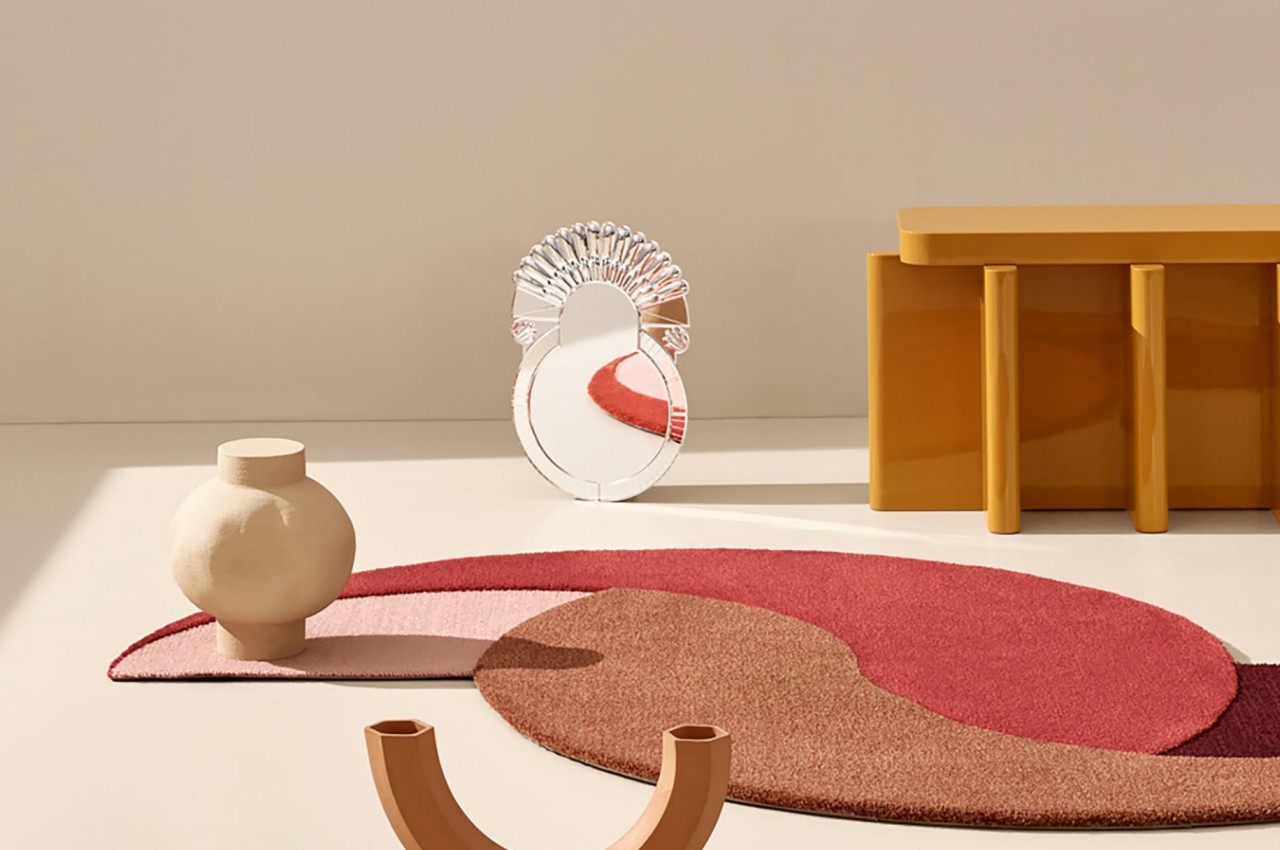
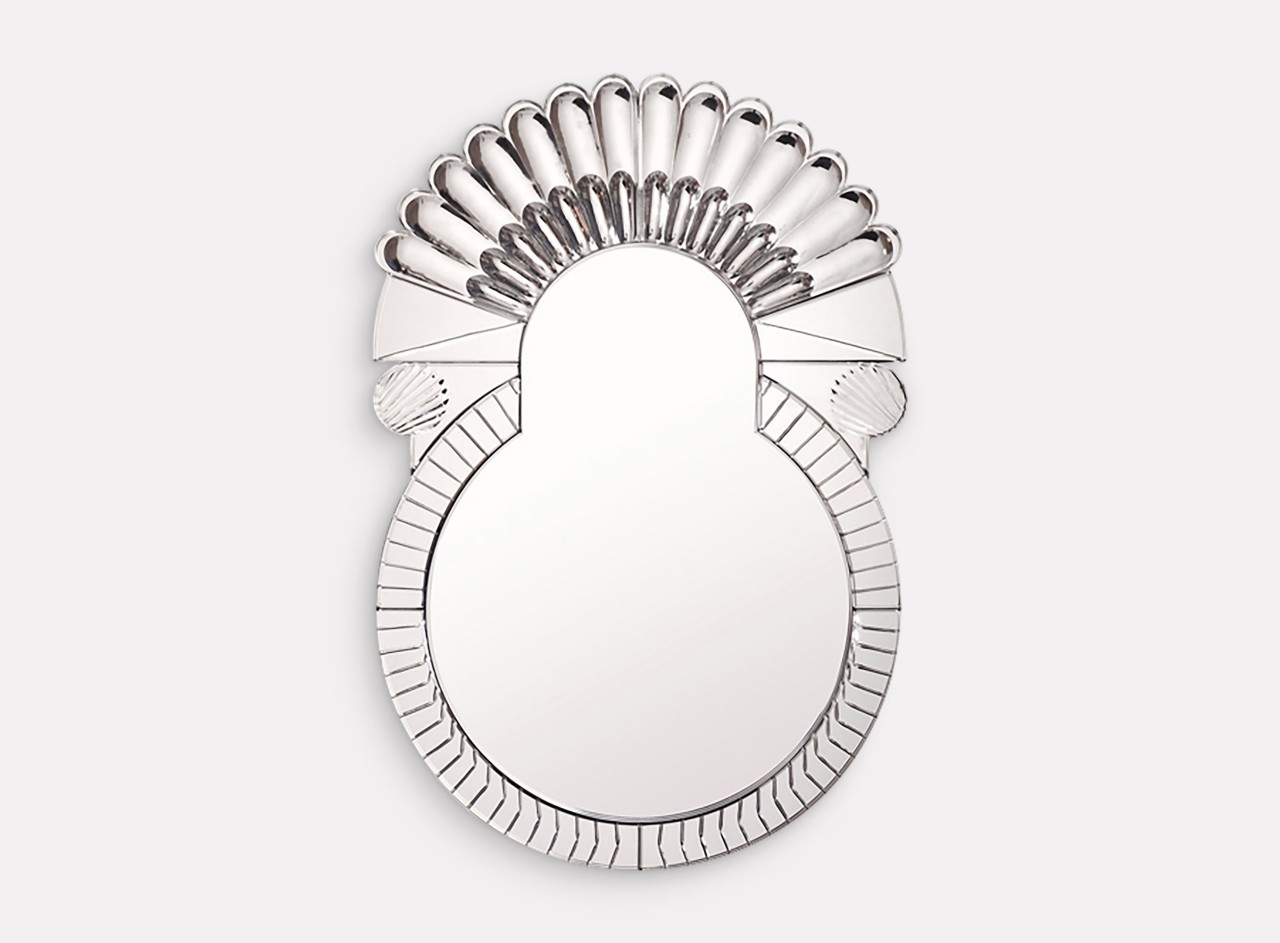
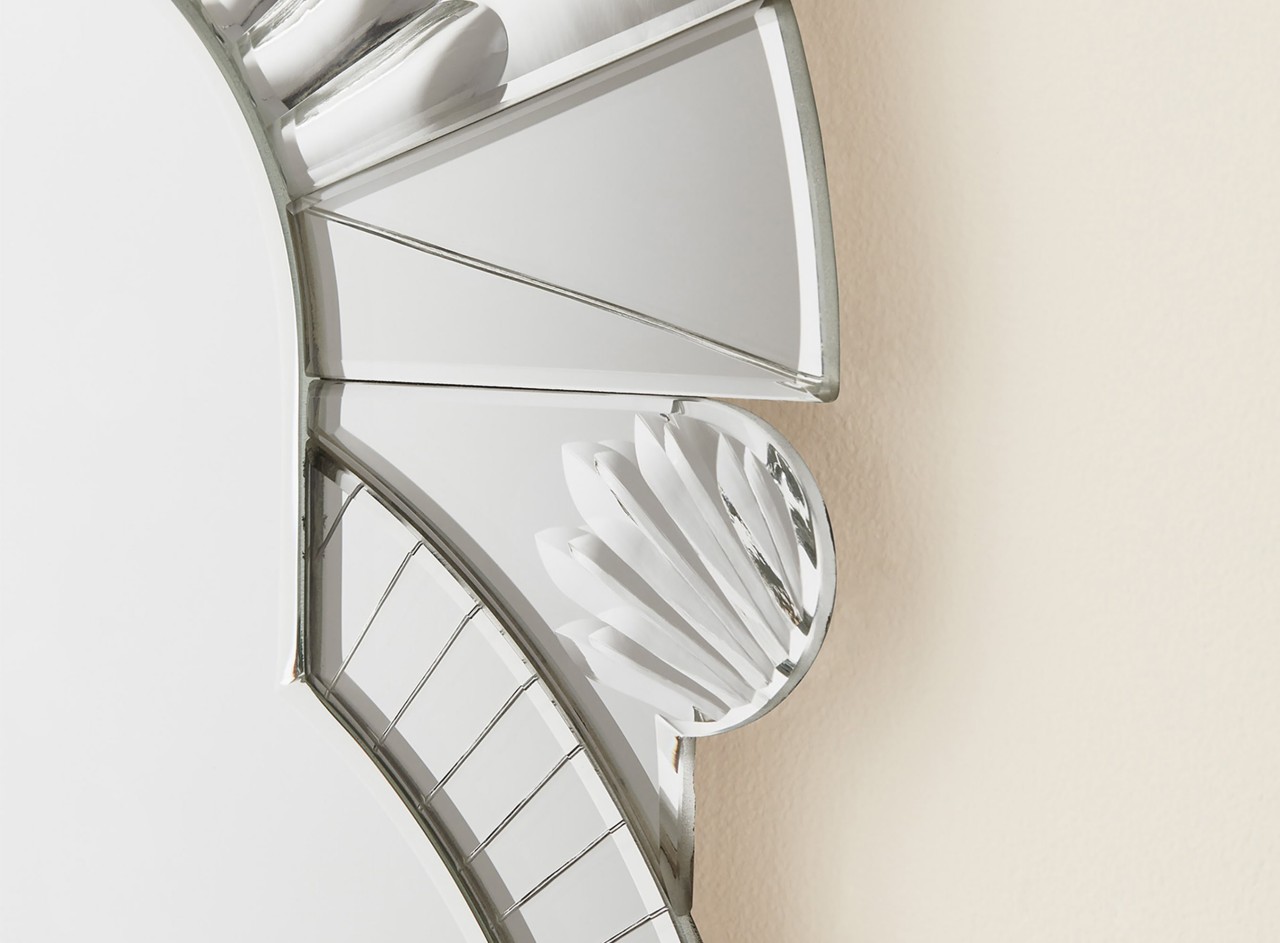
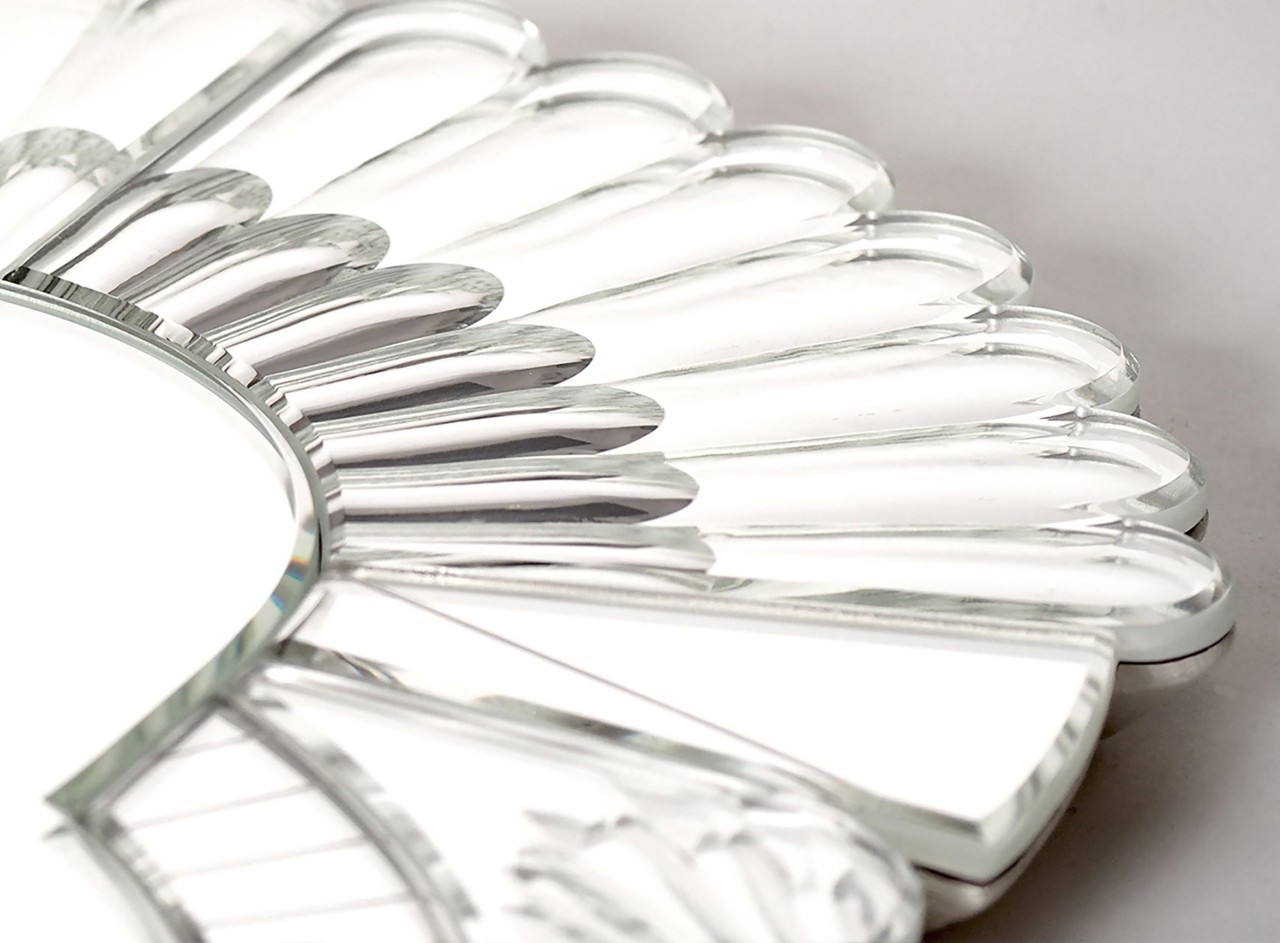
Designer: Nikolai Kotlarczyk (Portego)
Scena, a Venetian mirror, exudes depth and sophistication with intricate detailing. Inspired by Renaissance architect Andrea Palladio, it mirrors the Teatro Olimpico’s plan. Nikolai Kotlarczyk’s design for Portego employs silver-plated carved glass and polished steel inserts, skillfully crafted by Murano glass artists.
10. Pichwai Painting
Originating over 400 years ago in Nathdwara, Rajasthan, India, Pichwai is a sophisticated painting style that intricately weaves tales from the life of Lord Krishna onto fabric. Referred to as “back textile hanging” art, Pichwai adorned the temple of Shrinathji (Lord Krishna) in Nathdwara, serving as a celebratory portrayal of diverse seasons, festivals, and events associated with Lord Krishna.
Varsha Ritu Pichwai Tapestry by Tarun Tahiliani, India
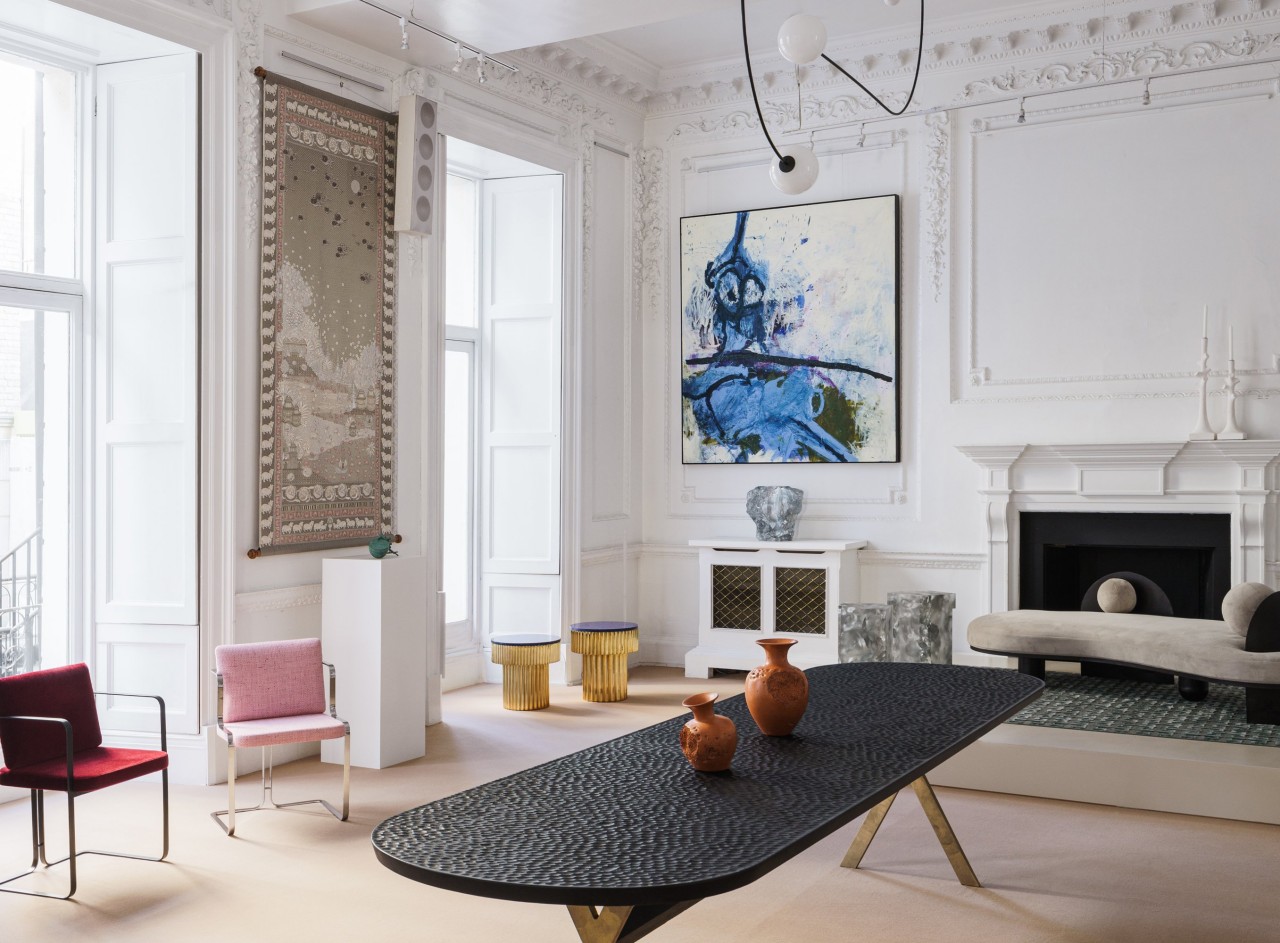
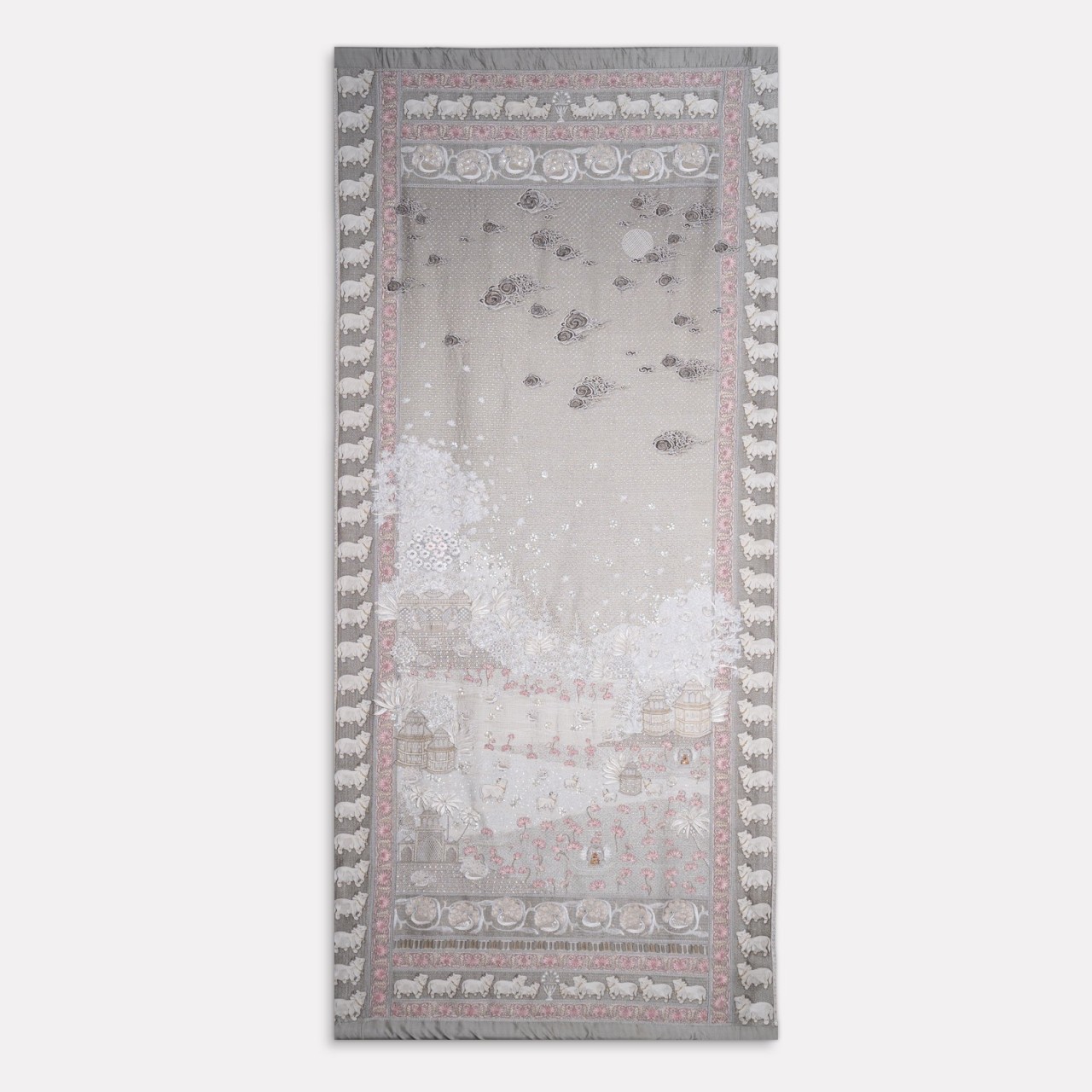
Designer: Tarun Tahiliani
The Varsha Ritu Pichwai tapestry pays homage to ancient Pichwai paintings. The work is hand-embroidered in India, depicting intricate landscapes with temples, flora, and fauna in subtle colors and shimmering silk threads that are intertwined to form miniature mother-of-pearl flowers and French knots.




